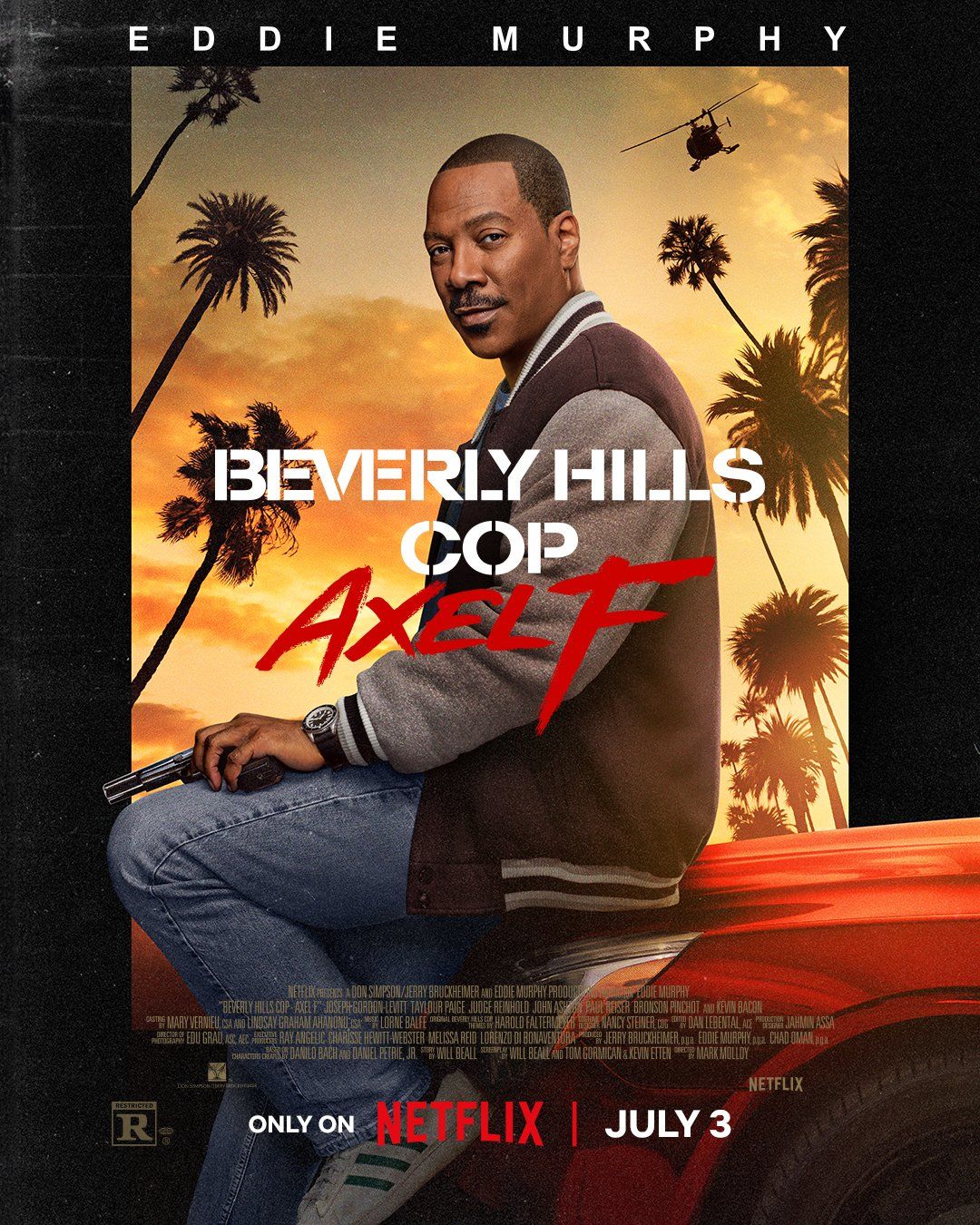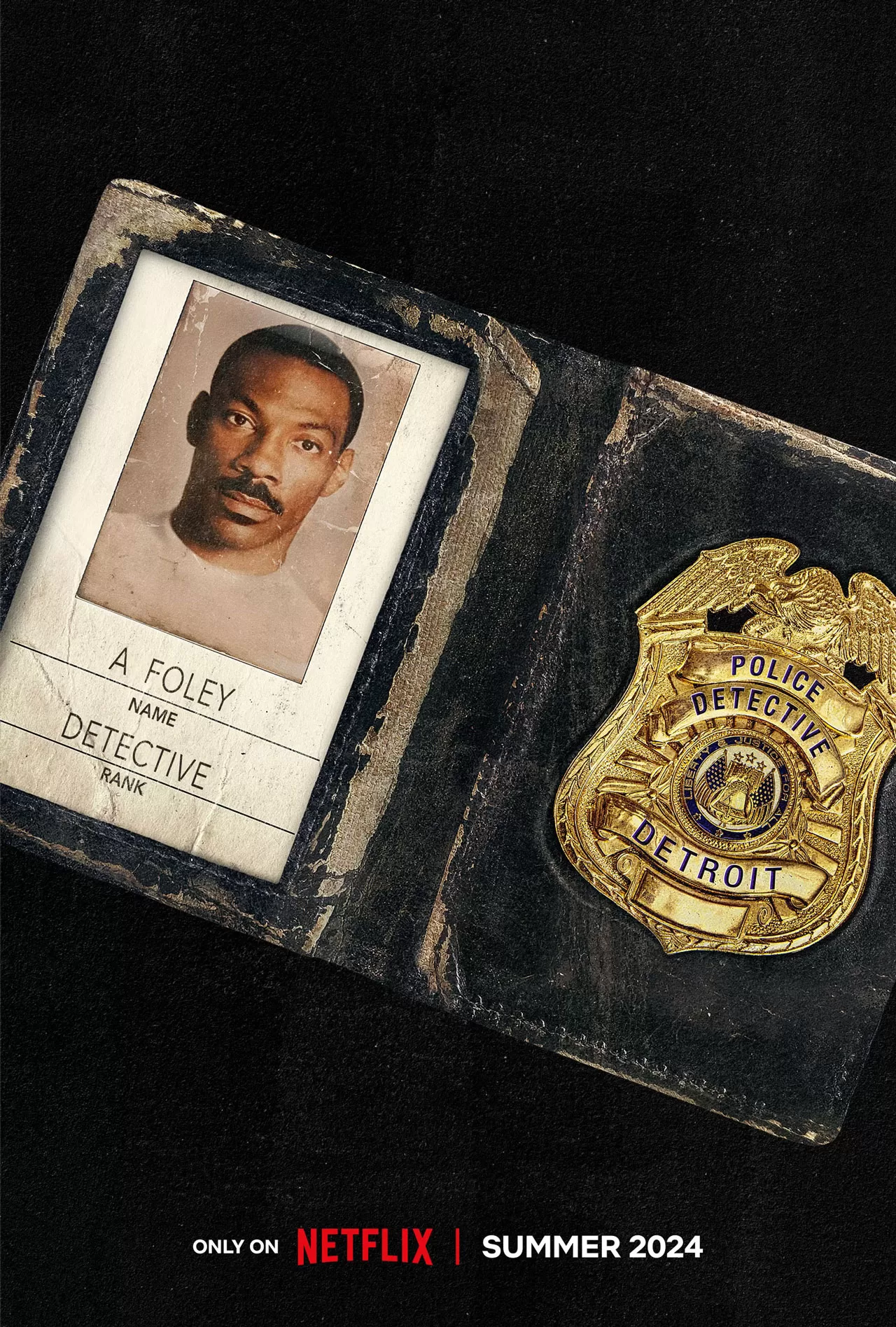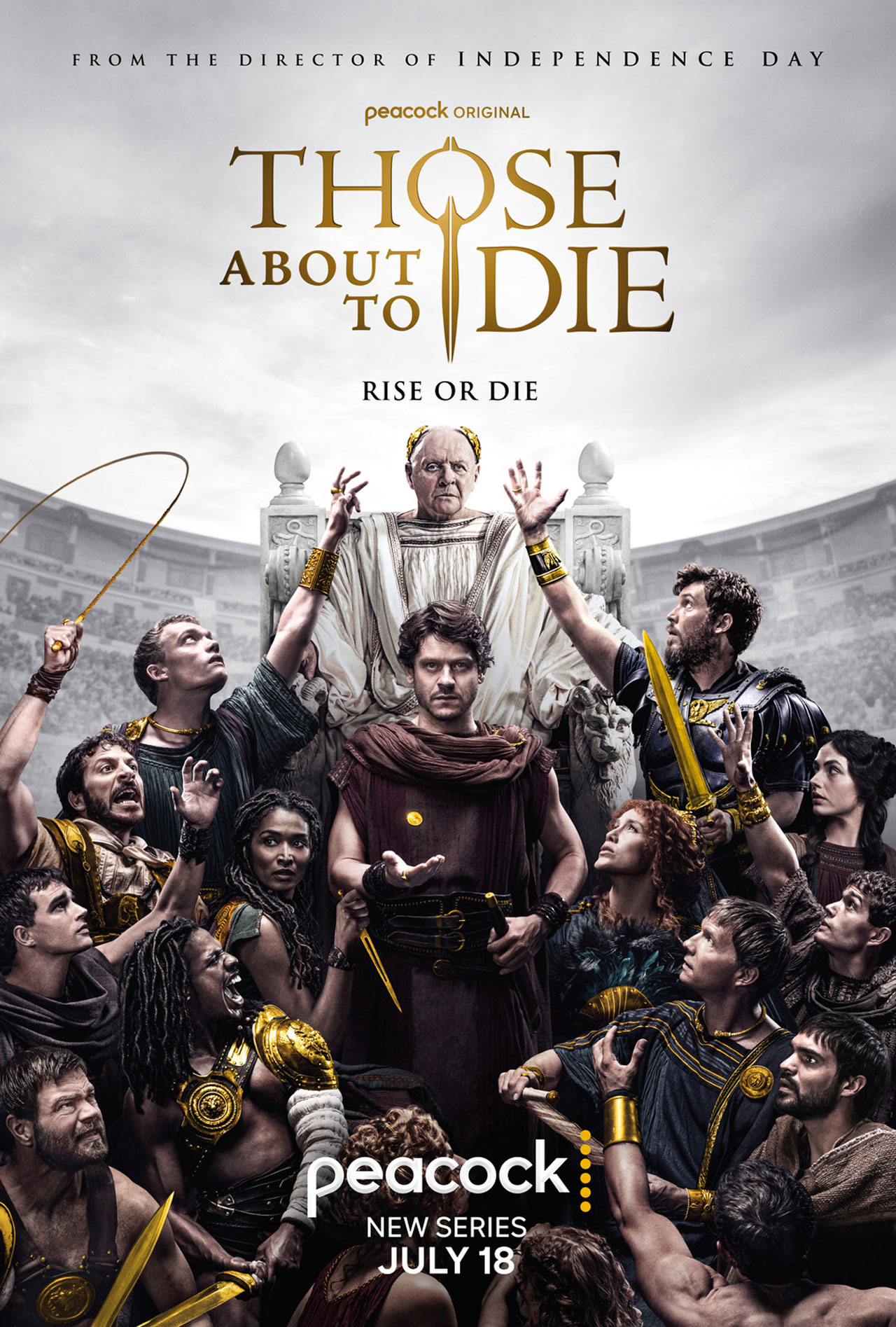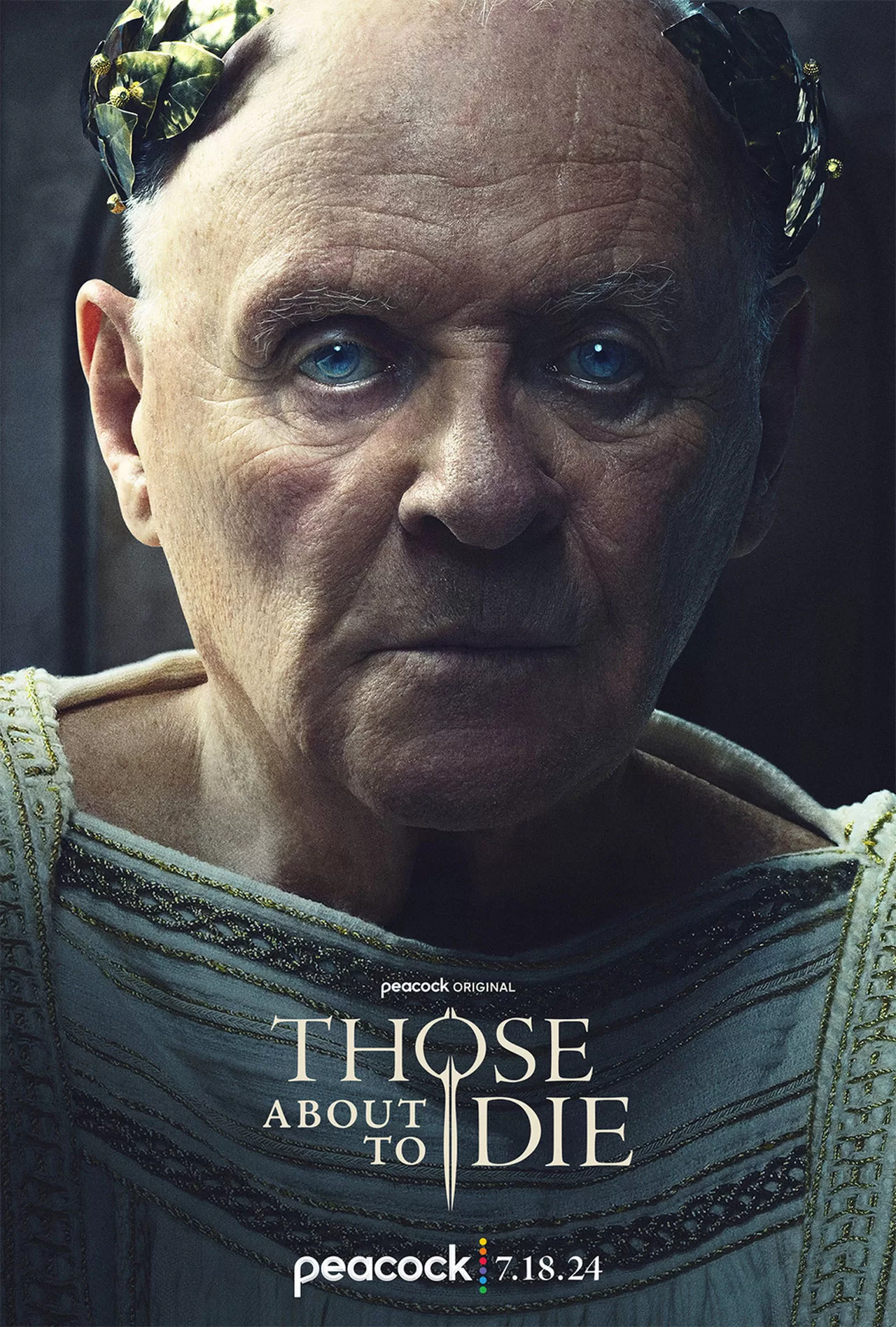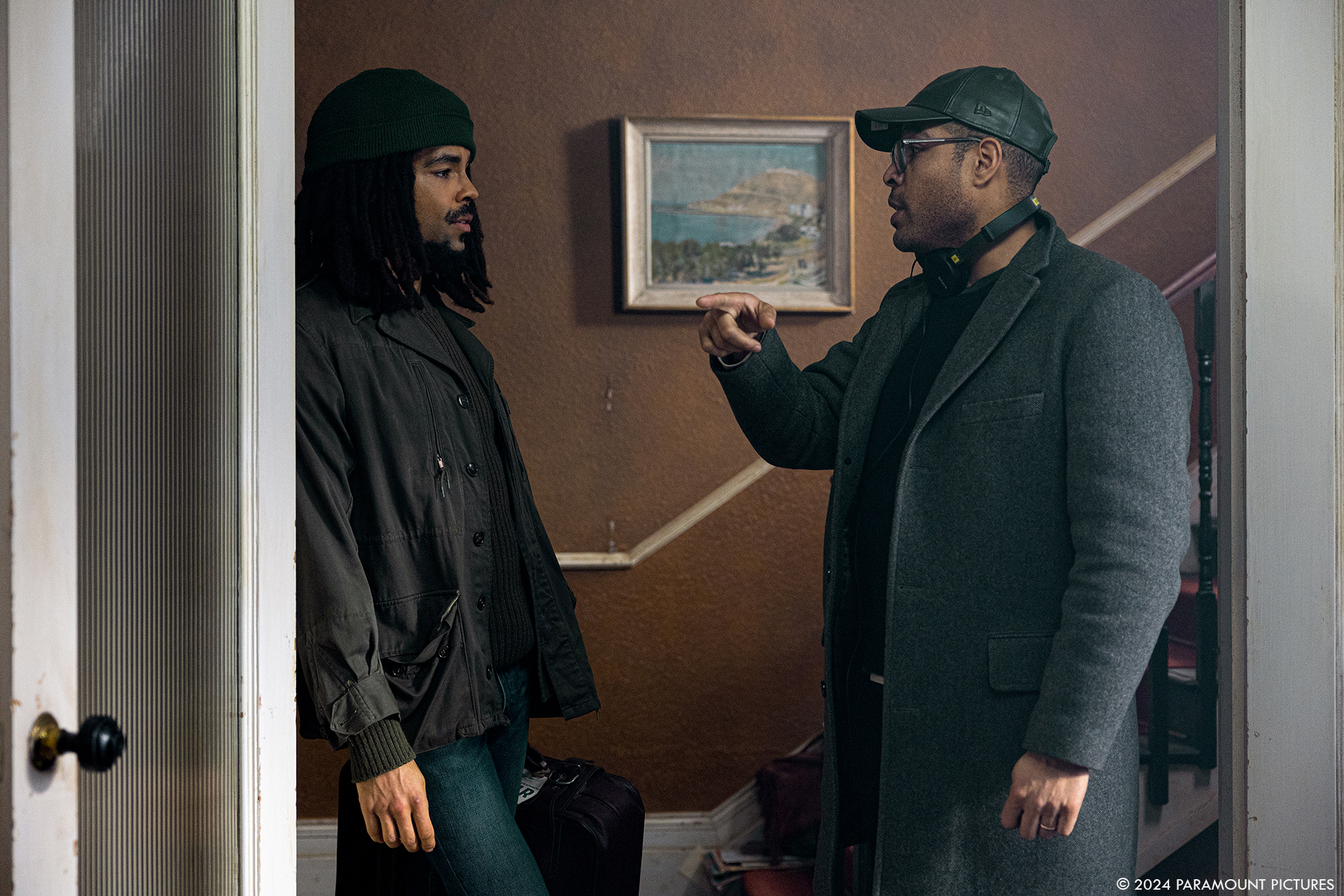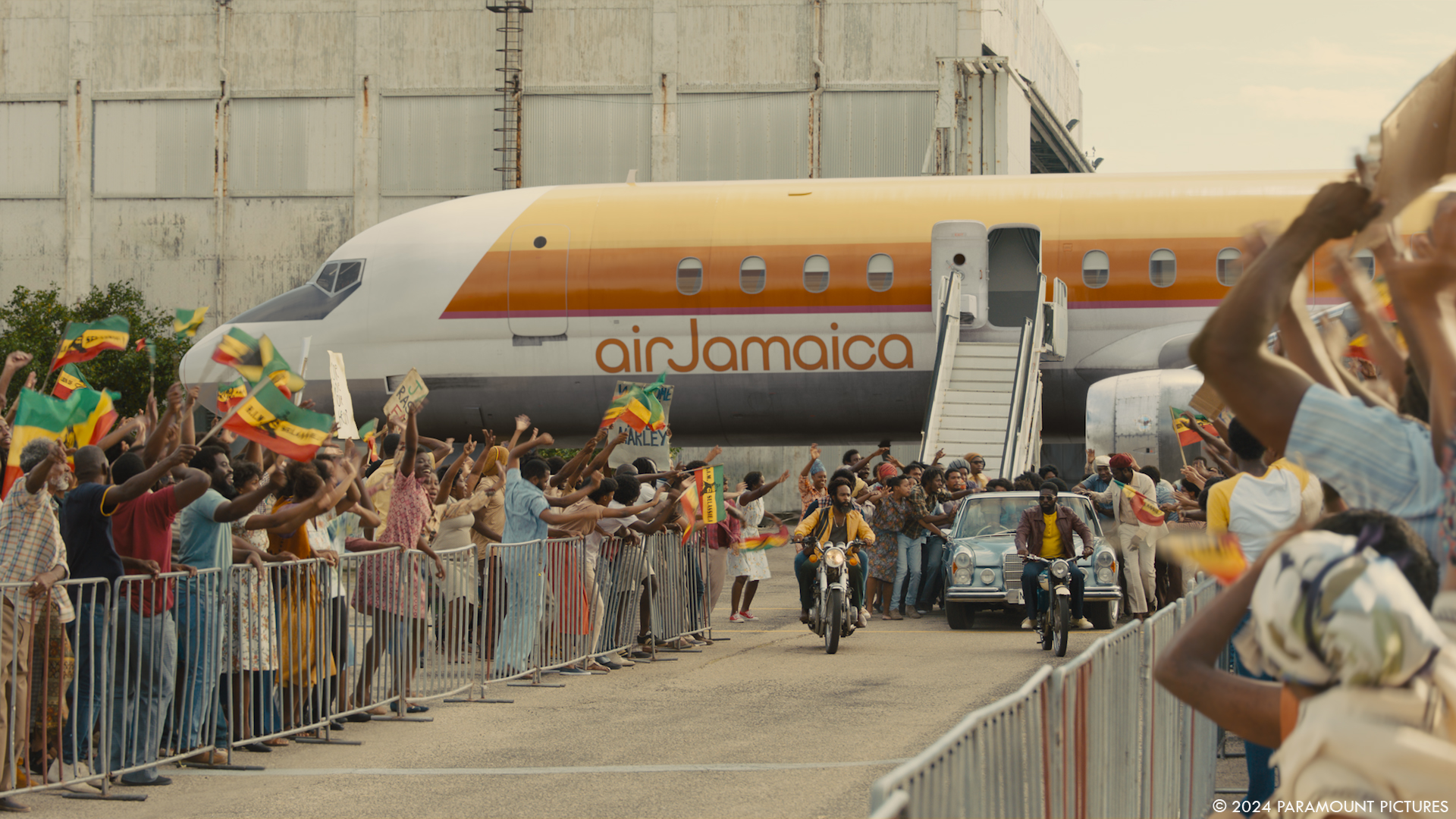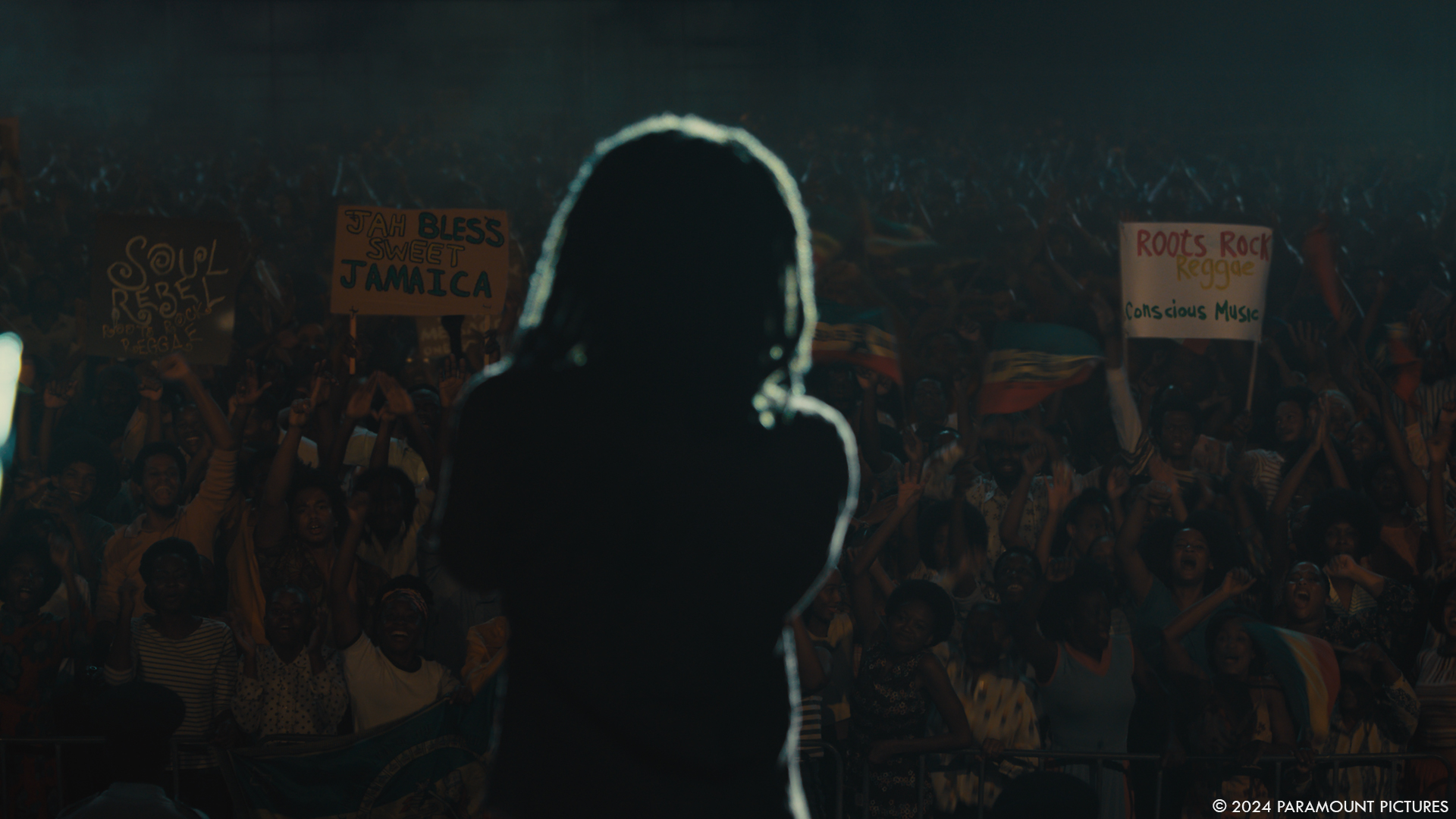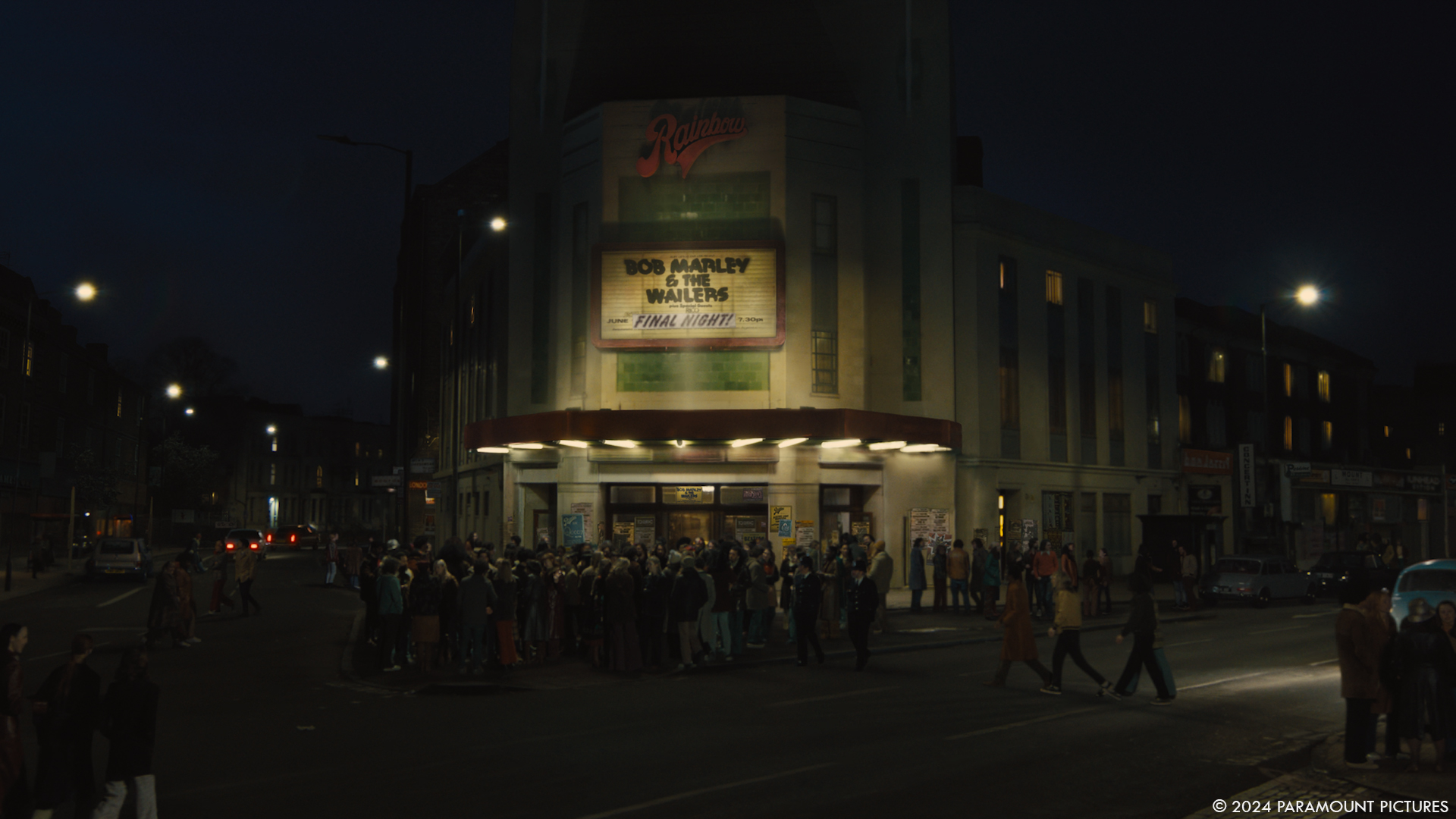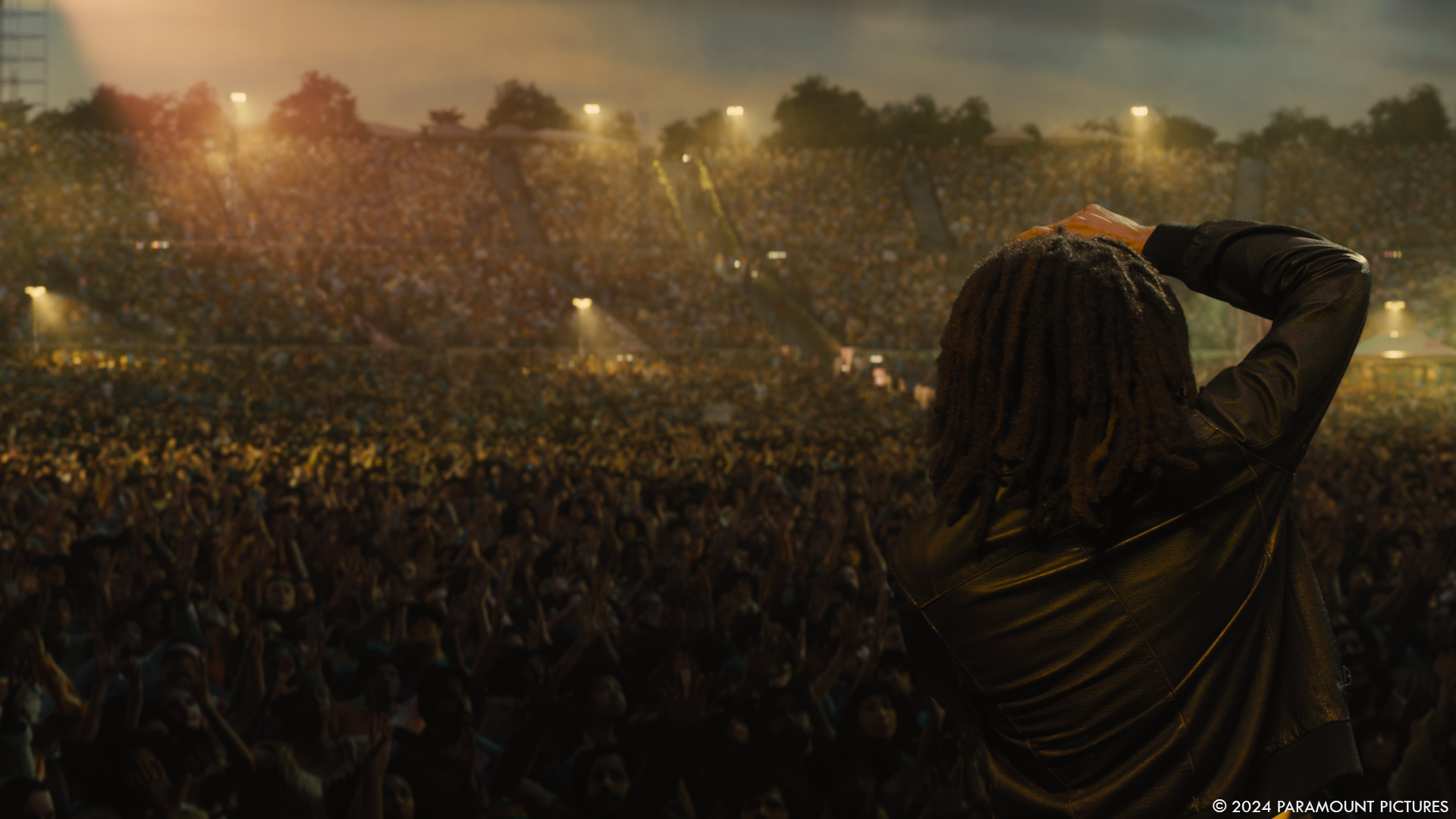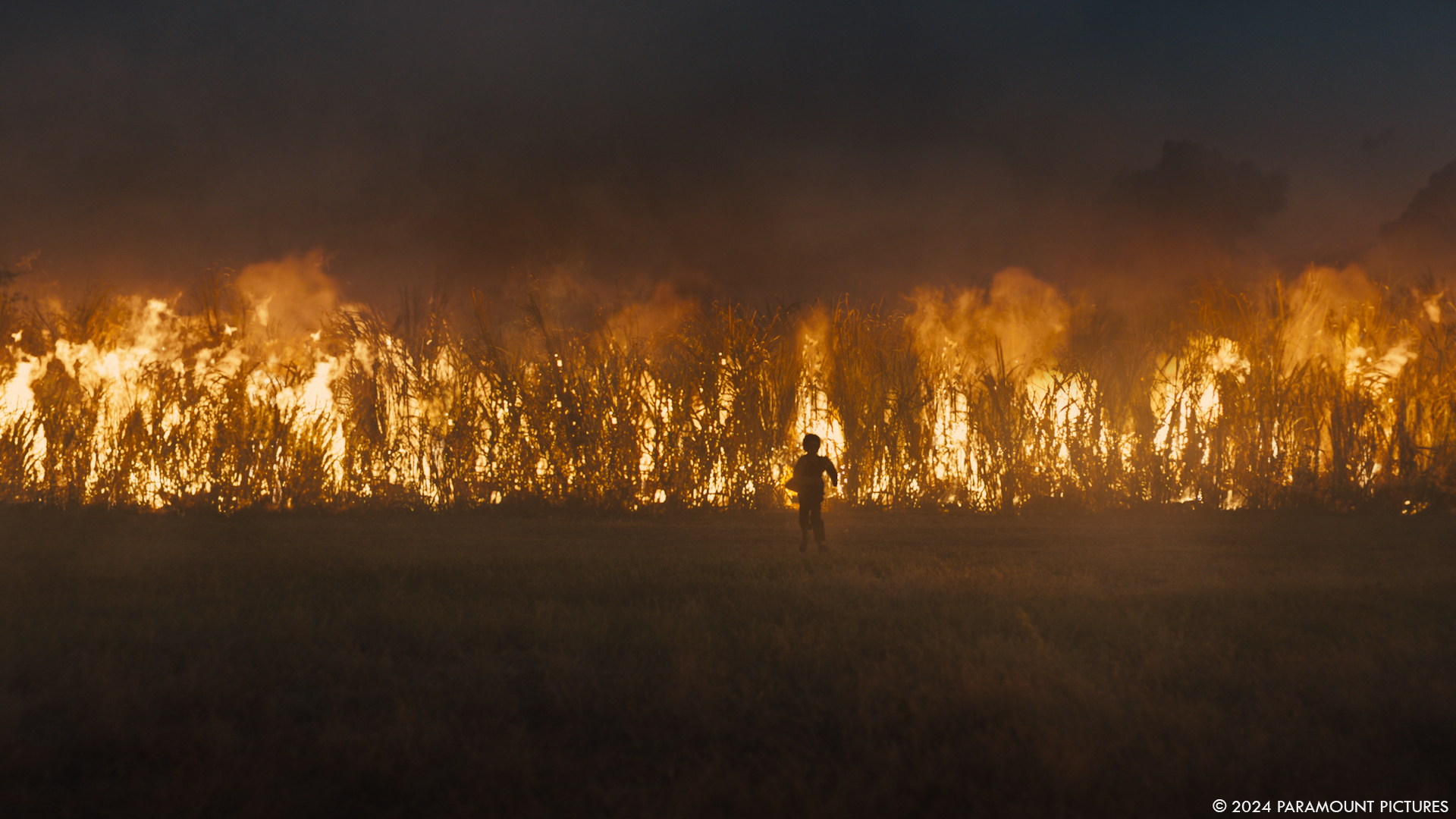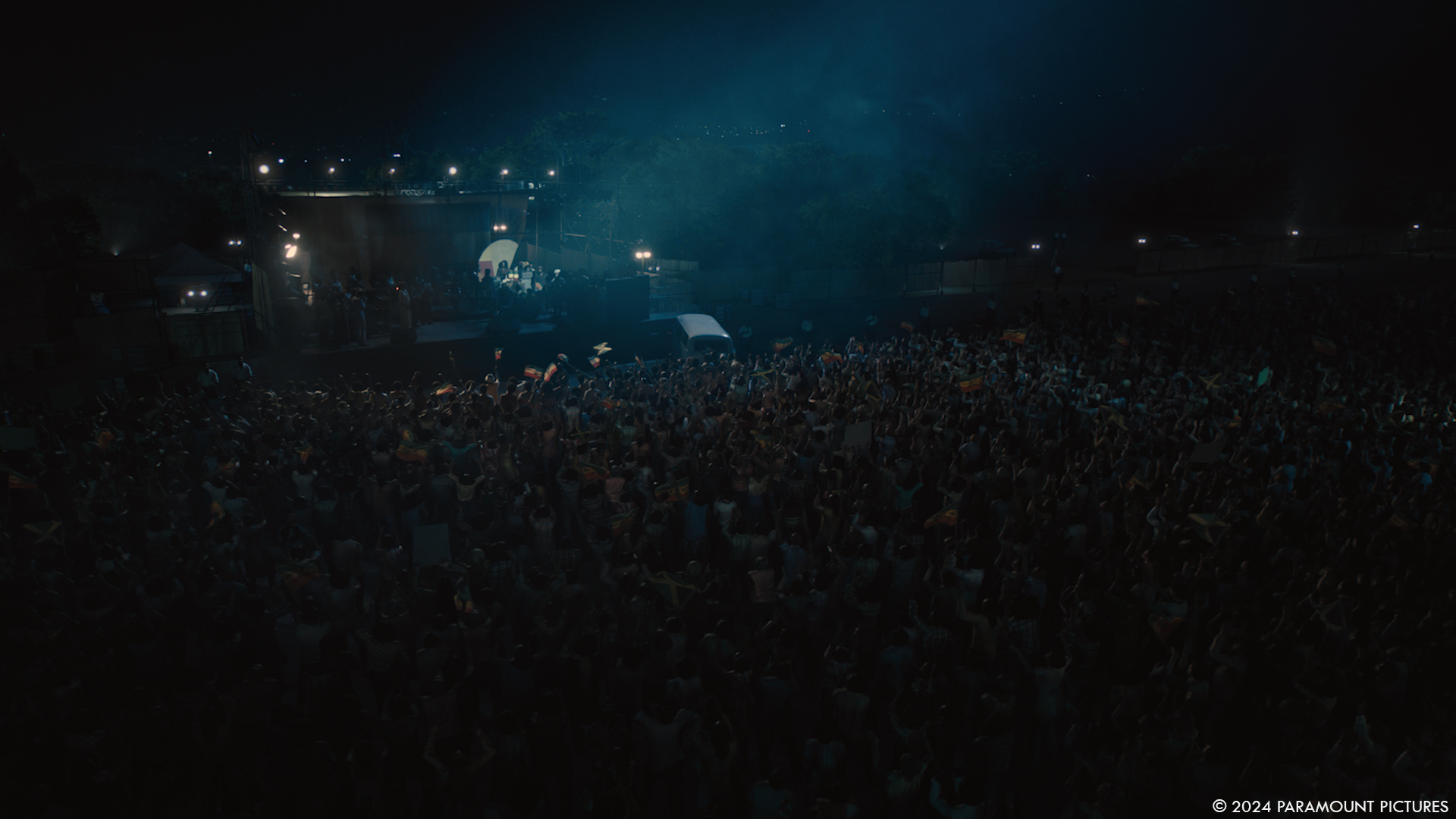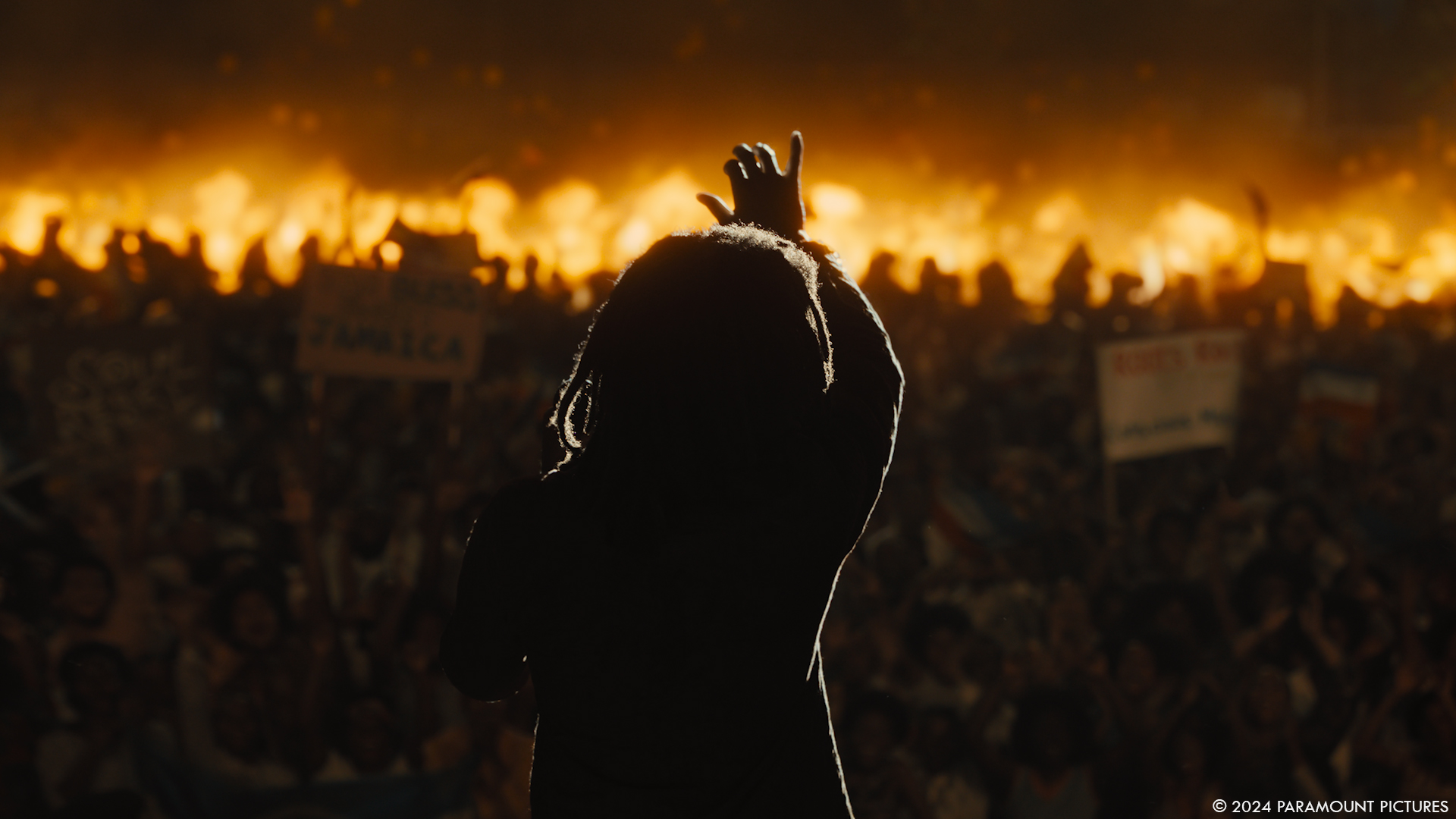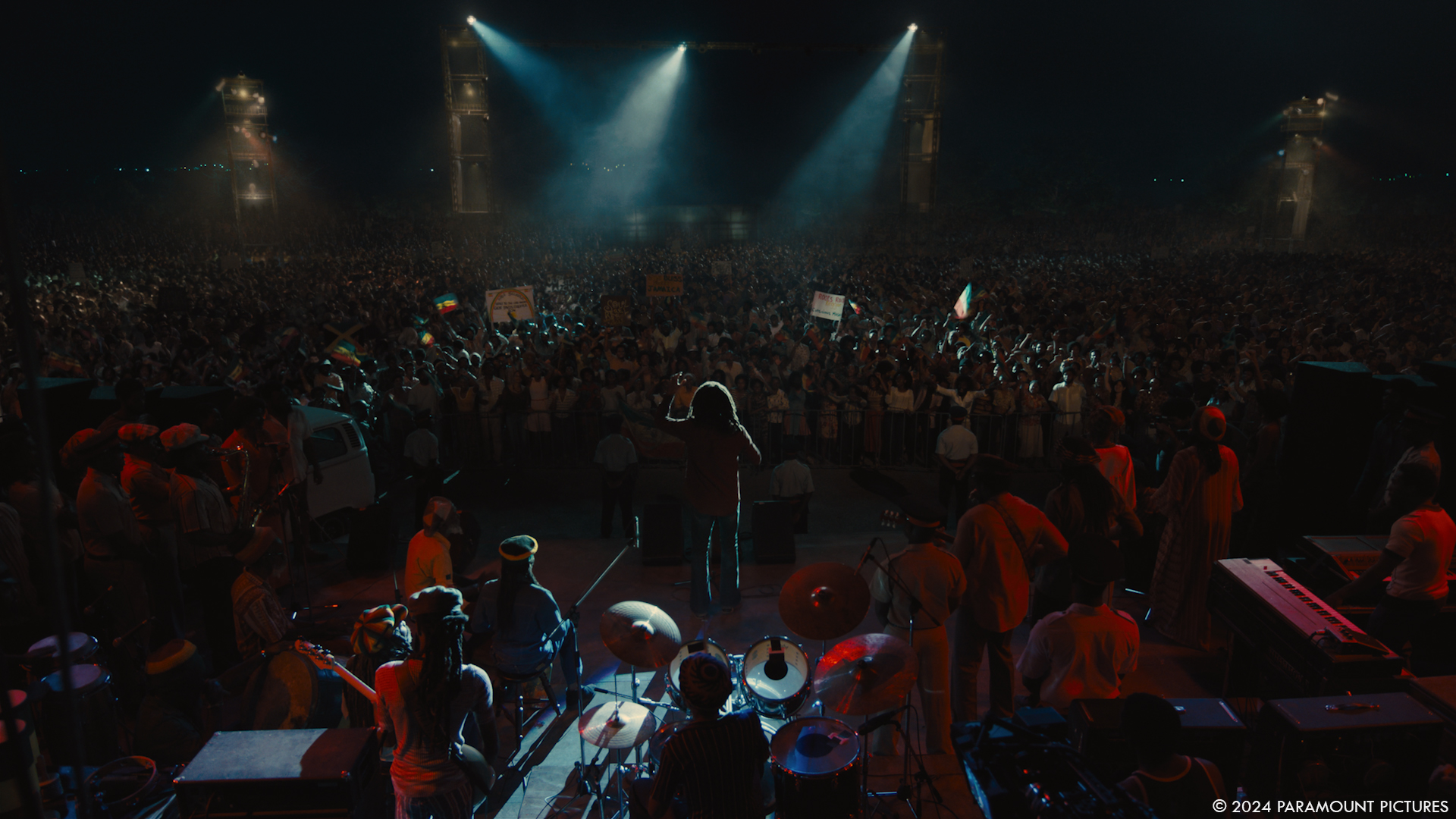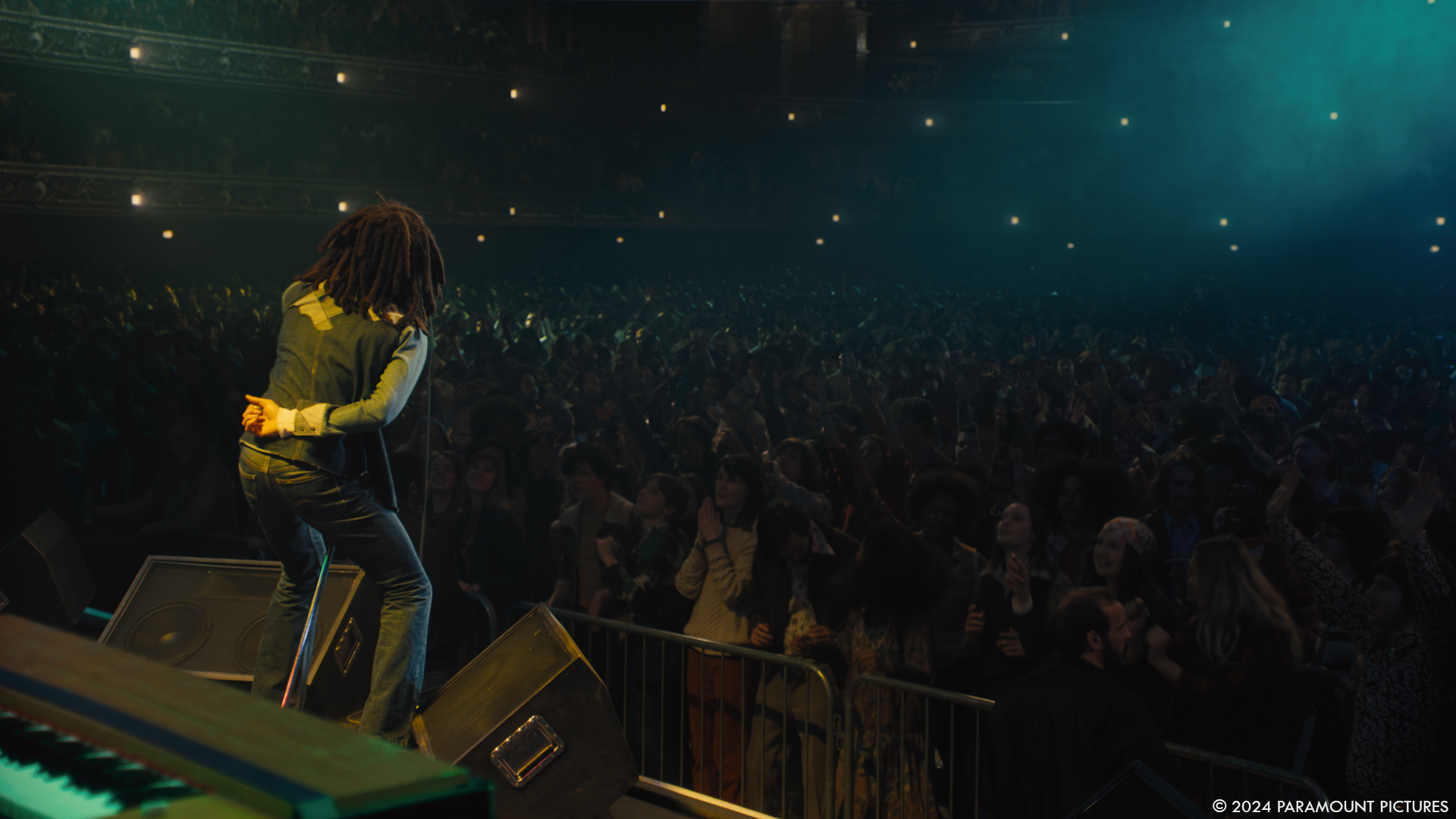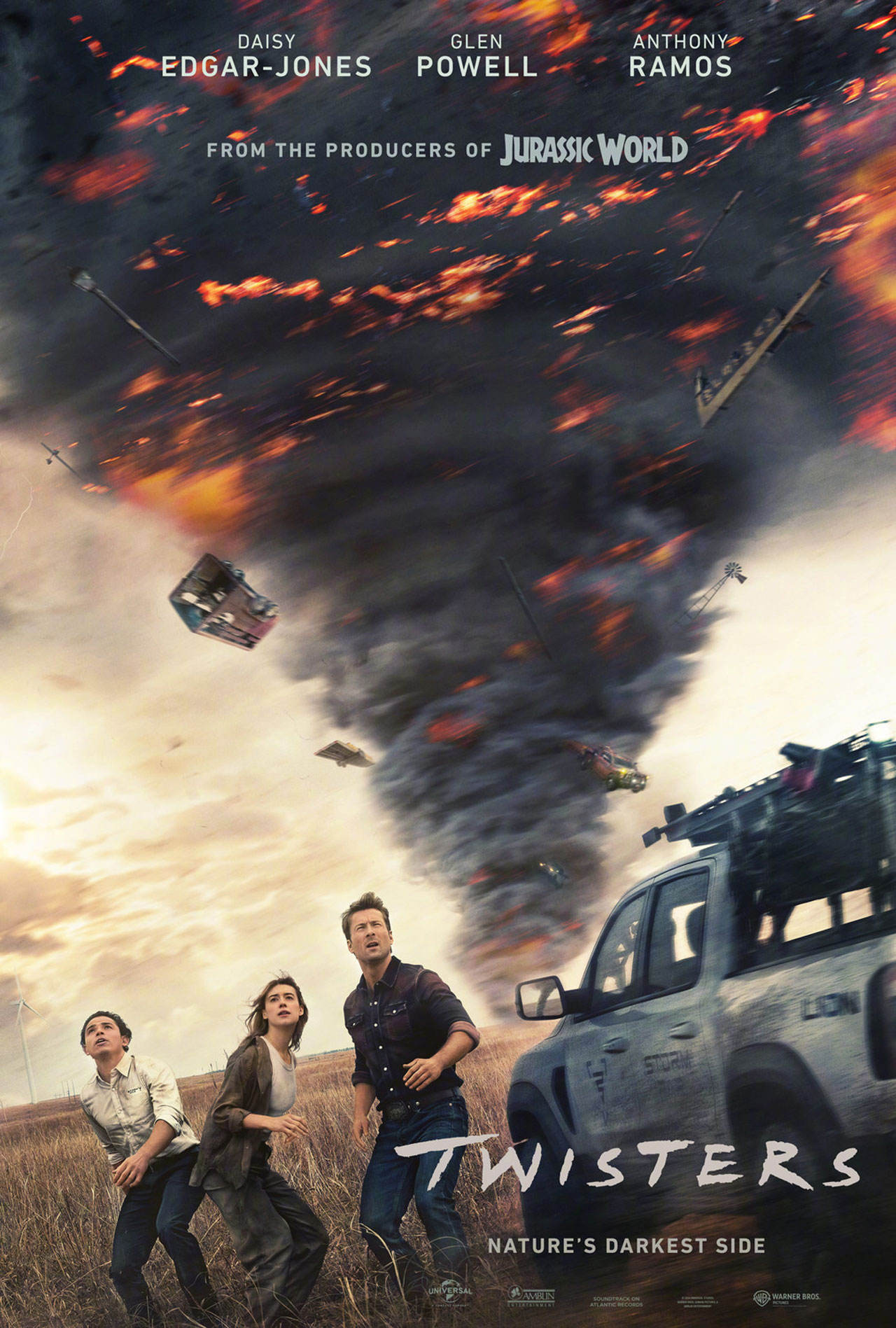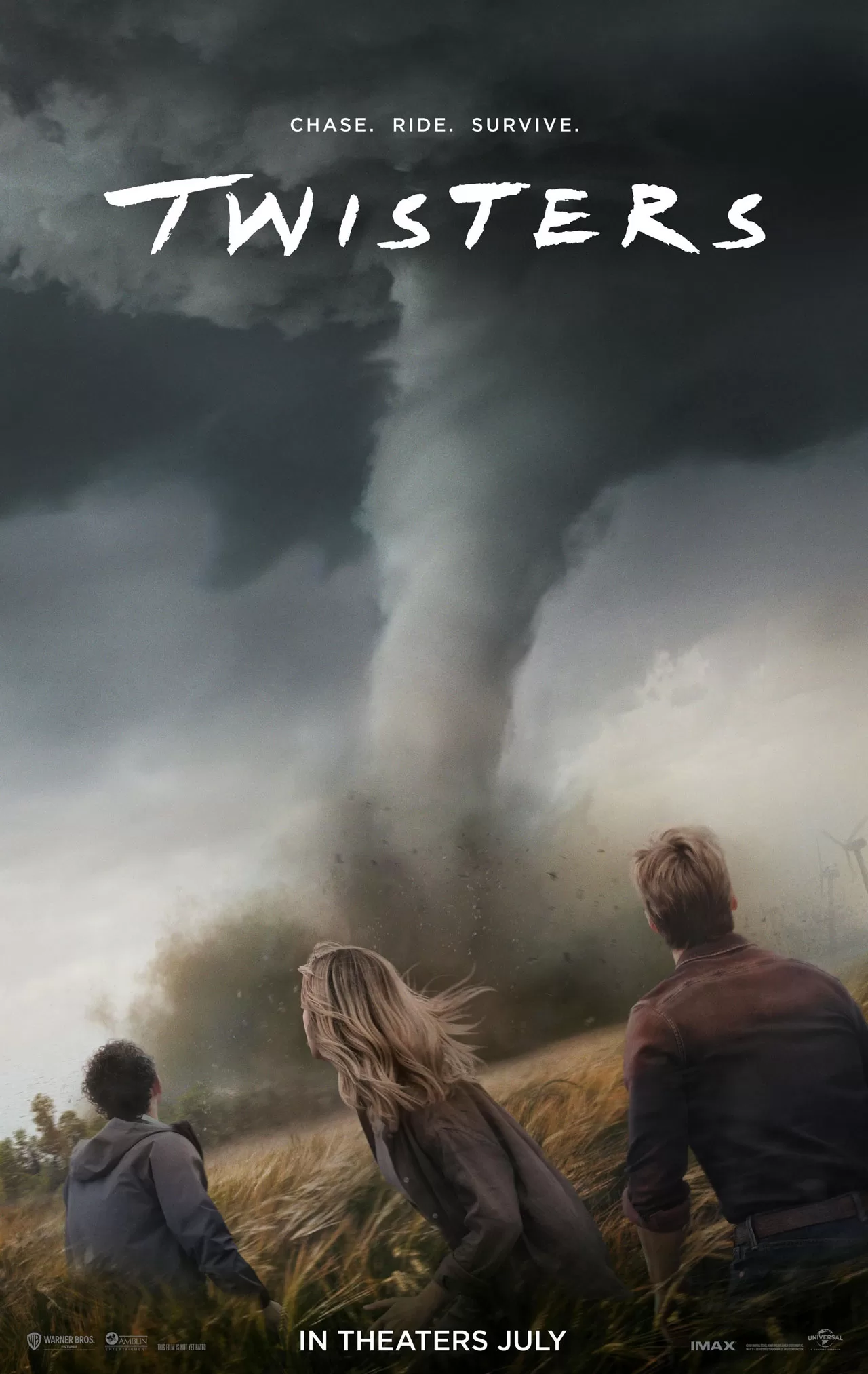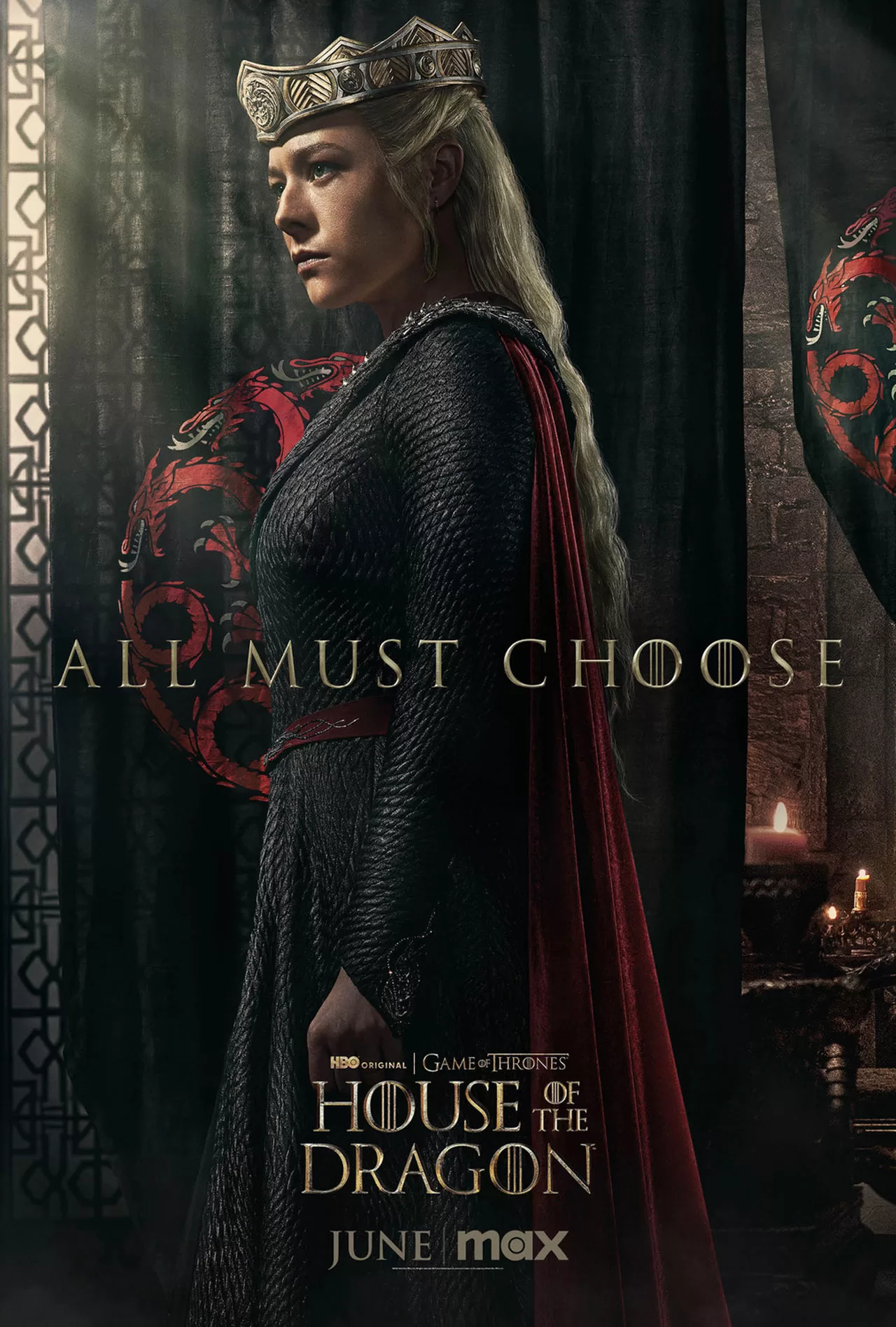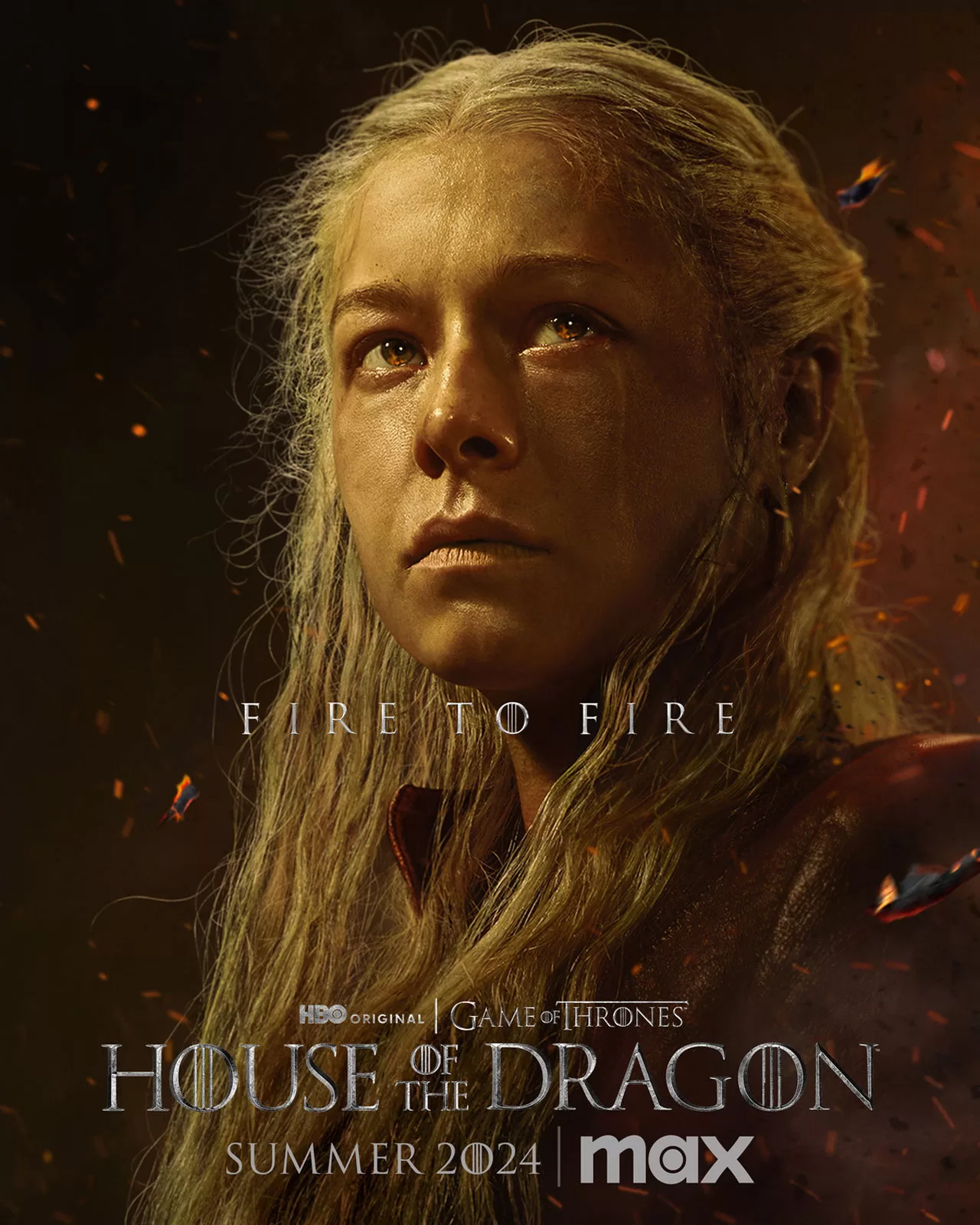Stephen Unterfranz has dedicated more than 25 years to the visual effects industry, collaborating with studios such as Blue Sky Studios, Tippett Studio, and Weta FX. His extensive filmography includes projects like Prometheus, The Hobbit trilogy, War for the Planet of the Apes, and Rampage.
Phillip Leonhardt launched his career in 2000, gaining experience at various studios like Cinesite, DNEG, and Rising Sun Pictures, before becoming part of Weta FX in 2005. He has contributed to many films, including Dawn of the Planet of the Apes, Maze Runner: The Death Cure, Alita: Battle Angel, and Avengers: Endgame.
What was your feeling to be back in the Planet of the Apes universe?
Unter: I was really excited to return to the Planet of the Apes. For starters, the story of Kingdom is a fresh take on the franchise without abandoning any of the canon. It’s long enough after the life of Caesar that not only can all new characters be established, but also the world can be beautiful again; we described the visual language as post-post-apocalyptic. During Dawn I was the head of environments at Weta FX, where we did a lot of world building in and around San Francisco. On War I was head of lighting, and helped with the implementation of new toolsets for our TDs. It’s been really enjoyable to approach each of these films in a different role, and to tie together that past experience as a supervisor on Kingdom.
Phillip: It’s been almost 7 years since we worked on War, with a quick excursion to the Apes universe that introduced our beloved characters to The Planet of the Apes theme park ride. It’s been a thrill to be back and to bring a whole new set of character to live in a future world dictated by primates.
How was the collaboration with Director Wes Ball?
Phillip: Having worked with Wes before on his Maze Runner installments, we knew it was going to be a real pleasure to collaborate with him again on this project. The scale and complexity of Kingdom of the Planet of the Apes is enormous. Wes’ visual guidance and feel for the world he created is excellent, and there was mutual trust and a strong belief that we were right on track to create something truly epic together.
Unter: I agree, Wes is great! I knew from past projects how technically and creatively savvy he is, both as a filmmaker and a visual artist. His fluency in VFX made our process really constructive, and his enthusiasm and attention detail always made us feel appreciated. It’s exactly the kind of relationship you want with a director on a project this epic in scope and complexity. We always looked forward to our reviews with him.

How did you organize the work with your VFX Producer?
Phillip: Because of the scale and sheer amount of CG assets there’s a lot of coordination involved to ensure milestones are being realised, work is executed to the highest standard, time frames are being defined and honoured, as well as tasks being distributed efficiently and effectively amongst all the artists involved. We often sit down together, review our current progress, and adjust schedule parameters – film making is a very creative process with a lot of variables that change as time moves on.
Unter: We also split the show across four teams that loosely followed the story chronologically. We got the machine firing on all cylinders relatively early to get a manageable distribution of complex sequences across the schedule. Some of our heavier simulations had long iteration cycles so we needed to get a head start on them to ensure we weren’t setting ourselves up for a major render crunch at the end.

Could you elaborate on the key visual effects advancements made between Kingdom of the Planet of the Apes and its predecessor, and how these advancements contributed to the overall visual effects work of the film?
Unter: We’ve developed a lot of technology in the years since War… One obvious example is the focus on water for the Avatar sequel. Our FX framework for water (state machine) makes it possible to realistically define the transition from surface to blobbies to points as waves break on the coast. What determines the specific structure of those transitions within that volume on any given frame, and how those points and surfaces are rendered, is something we – how else to say it?! – dove even deeper into for Kingdom. Feather systems, muscle behaviour… the list of ongoing improvements reaches into every corner of the work. But the tools are only half the story. On every show, our talented crew gains new experience in deploying these tools and techniques, and brings that expertise to the next project.
Phillip: As Unter says, technology never stands still, particularly in VFX. To name just a few others, we made some key upgrades to our facial capture system, created efficiencies in our shader and texture pipeline, advanced with new procedural dressing techniques for our vast environments, applied new FX workflows for fire as well as water, and did some extensive lens profiling to capture and apply the characteristics of the anamorphic lenses used in the film to our CG characters, environments, and effects.
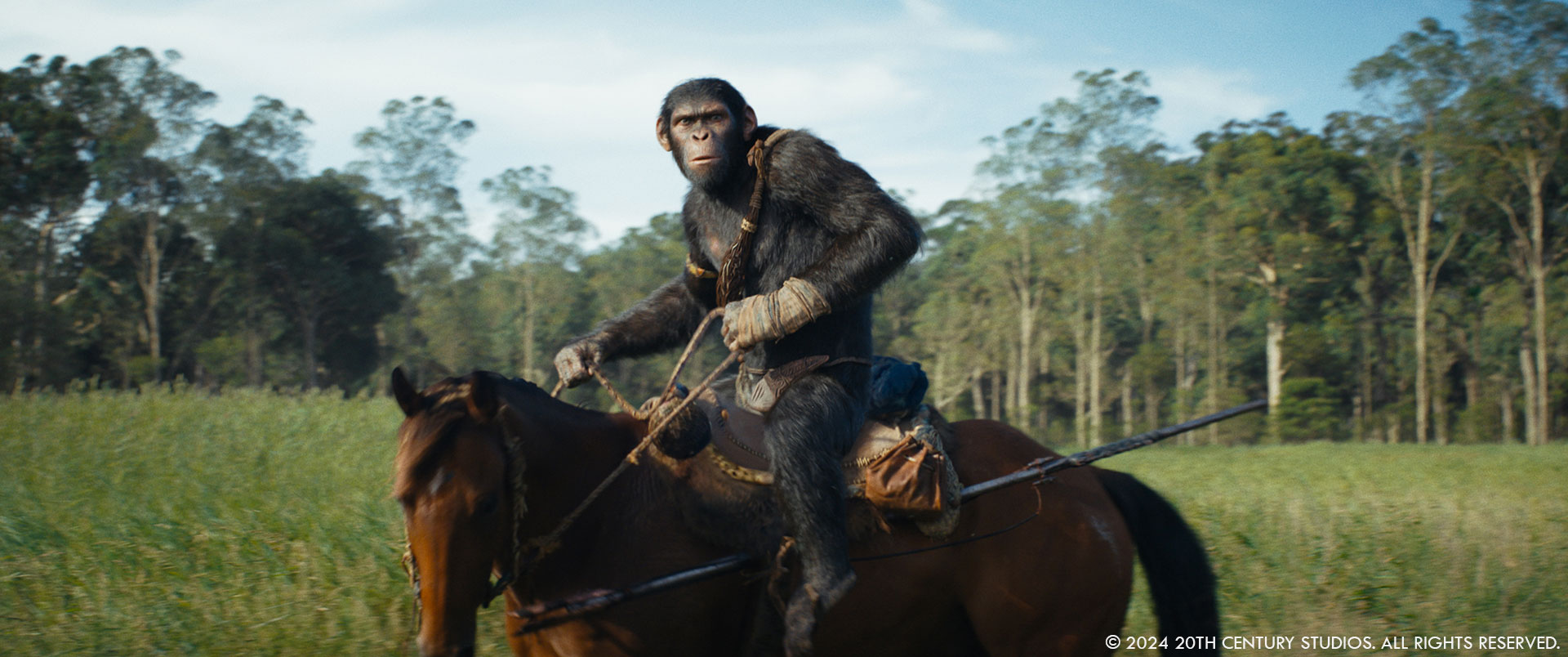
In what ways did the evolution of CG and animation technology influence the portrayal of the ape characters in the latest instalment compared to earlier films in the series?
Phillip: In many ways, we used the advancements in technology to give artists more time to spend on the creative aspect of their work. For example, facial solving now supports a deep learning solver that provides the animators with a consistent base line that they can then adjust and refine. Having to commit less time to such base line parameters essentially frees up precious time for creative fine tuning that adds those last few percent of perfection. Therefore, our apes’ performances on Kingdom shine and are truly alive in every single shot of the movie.
Unter: Along with a lot more dialog, many of the apes in this film are wearing clothes. It’s not that long ago that a furry character wearing multiple layers of clothing would have been a tall order to set up and to process! As an example, to provide an outward expression of his obsession with the Romans, Proximus has the most elaborate outfit – a combination of cloth, copper, and leather, with each material needing to render, deform, and interact in a believable way.
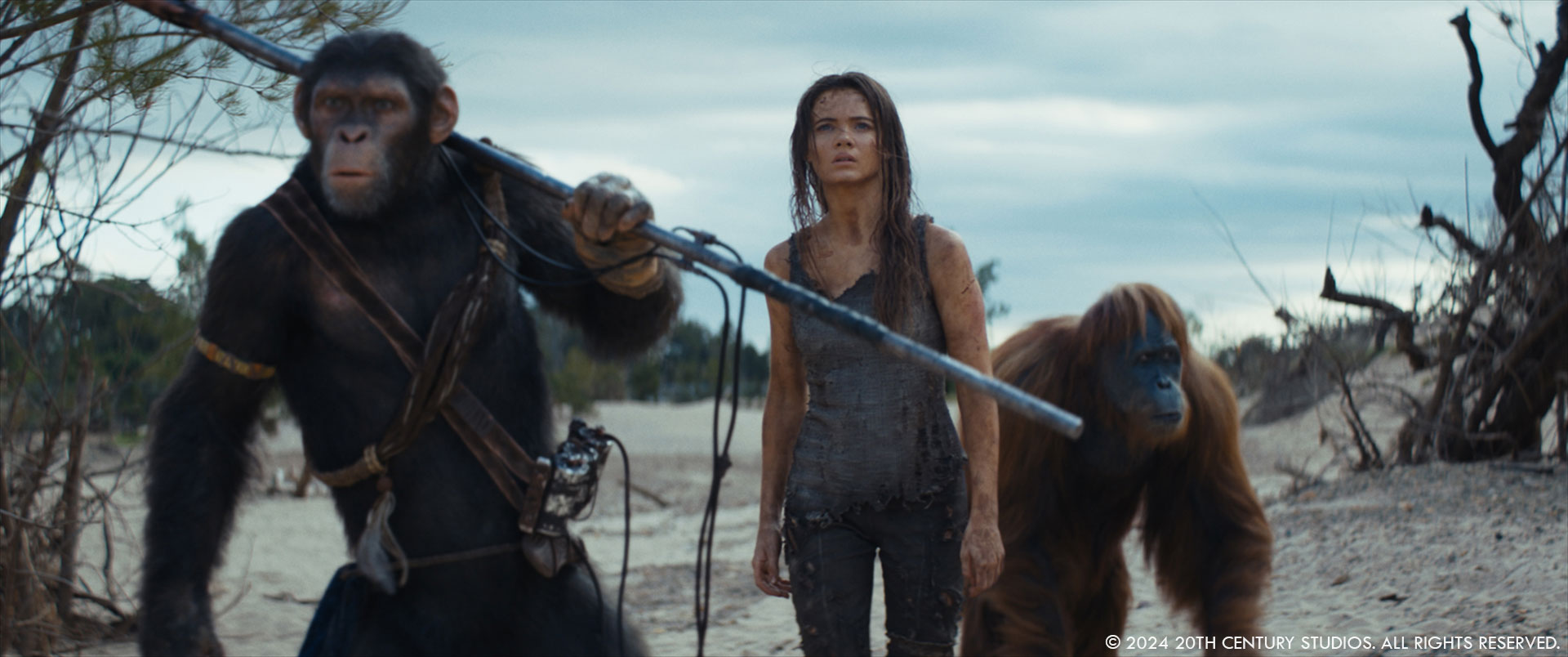
Can you walk us through the initial concept behind creating hyper-realistic visual effects for the new Planet of the Apes film?
Unter: Replicating the imperfections of the Panavision anamorphic lenses used in principle photography was key to integrating every aspect of the visual effects for Kingdom. All the data gathered on set combined with advancements in our tools meant we could strip those imperfections from the plate, composite the CG elements in, and then reapply the look of each lens across the entire image. Lens warp, sensor noise, chromatic aberration, vignetting, edge smearing, PSF (point spread function), veiling glare . . . All were accounted for. The great thing was that the system was automated enough to establish accurate results while still enabling artists to make creative adjustments. That kind of control also meant that full CG shots (of which there are more than a few!) could get the same treatment based on the settings of the closest real world lens.

What were some of the key technological advancements that enabled the creation of these lifelike ape characters?
Phillip: For our final facial motion pass we used DeepShapes to be able to simulate overlap of skin wrinkle motion, based on fascia and epidermis layers. We essentially accounted for the skin’s depth profile to help inform where memory folds and facial shape variation would appear. It’s a subtle, but very powerful effect that breathes life into our hero characters that we didn’t have before.
How closely did the visual effects team work with the film’s directors and producers to ensure the apes were portrayed authentically?
Unter: Extremely! In the full swing of things we were reviewing work with Wes and the producers almost every day of the week. Our overall VFX supervisor Erik Winquist is an industry veteran, with a metric ton of CG primate experience. He and Wes had a shared vision of the film, not to mention great rapport; Erik understood the story Wes wanted to tell, and Wes trusted Erik’s expertise. That collaborative mindset radiated through the team, and authenticity can’t help but emerge in that kind of environment.
Phillip: Agreed, we were extremely close. We are combining the filmmakers’ vision of the characters with our expertise that we gathered over the decades bringing apes to live on the big screen. It all starts with the actors’ performances, so it’s important for them to learn about the behaviour of apes which, once on set in a mocap suit, they craft into their performances. There was so much more dialog amongst the apes than in the previous films, and it’s exhilarating to see that we still entirely believe that there are real apes having a conversation on the big screen – even though everyone knows that they can’t actually talk.
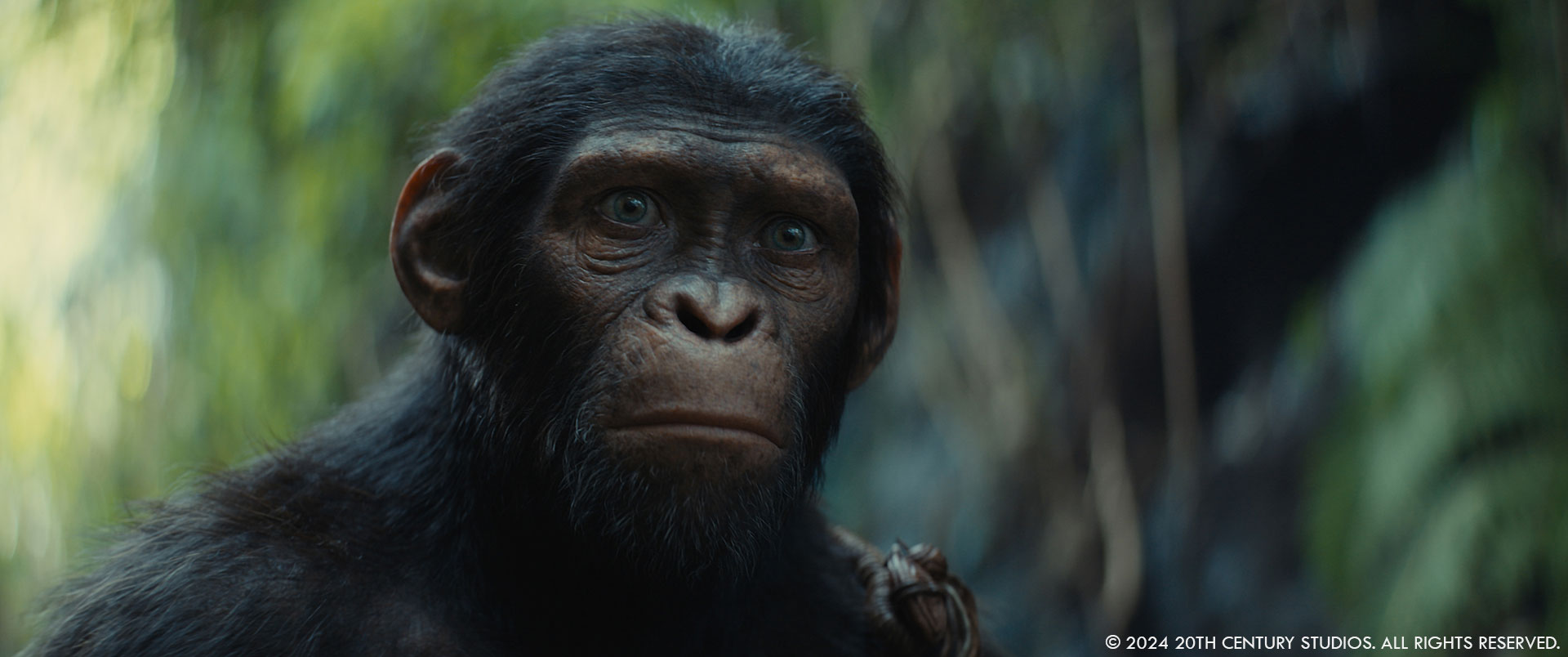
Could you elaborate on the process of motion capture and how it was utilized in bringing the ape characters to life?
Phillip: Motion capture was the heart and soul of this project. To translate the actors’ performances to their ape characters, we put them in mocap suits that look like grey, full-body leotards with dots, patterns and optical markers on them. And as long as the actors move within a predefined volume that was setup and covered with motion capture cameras, you can record their body motion and retarget it onto their ape character’s skeletons. For capturing the facial performance, special head-mounted camera rigs were used to record even the smallest detail of facial muscle motion. There’s a specific dot pattern painted on every actor’s face to help solve and translate that motion to their characters.
What were some of the biggest challenges faced during the creation and animation of the apes?
Unter: If you take a few minutes to really look at them, apes have very interesting hair and vary quite a bit, even within the same species. And the longer the hair, for example on an orangutan, the more difficult it is to wrangle it into behaving. Raka actually had a bespoke groom just for when he was in water. Another challenge is apes on horseback. Their legs are quite a bit shorter than humans relatively, so aligning their feet to real world stirrups and replacing the stunt riders required a bit of movie magic!
Phillip: Challenges also lie within creating a believable translation of the actor’s facial performance to their ape’s character. Ape faces move very differently compared to human faces. Their lips and cheeks are incredibly flexible, yet their eyebrows are rather stiff and firm. So frowning, for example, isn’t much of a an ape thing to do due to anatomy restrictions, however, humans use their eyebrows a lot. For example, if you want to make an inquisitive expression as a human your gaze narrows, you frown with your brows being pulled together and raised toward the centre – an ape can’t do that, instead they express this emotion more wide eyed, with their mouth slightly open, lips rounded, etc. The actors and animators did a fantastic job understanding those differences and relay that into their performances.
Were there any particular scenes or sequences in the film that presented unique challenges for your team?
Phillip: Besides the complex process of creating a whole new lineup of ape characters, creating the world they live in and making sure it’s as believable as the characters themselves posed numerous challenges. For the opening egg hunt scene, for example, we choreographed the action by previsualising the entire sequence, before building the whole world in all its lushness and detail for the apes to perform in, which was a huge undertaking. From there we moved onto extensive set extensions for the Eagle Clan Village, which we knew we later had to burn to the ground. There were a lot of concatenating processes involved in building these sets in CG so that we could pipe it through our fire simulation framework to create photoreal pyro effects that portray all the dramatic events as if they were real and shot in camera.
Unter: The river scene is a big turning point in the film, and was all the more challenging as some really emotionally charged performances had to come through all the frenetic action. Unlike deep open ocean, the underlying terrain of a riverbed plays a key part in creating believable rapids and eddies, but simultaneously makes them more difficult to art direct. For the establishing shot, we needed to simulate an entire kilometre of water to turn the calm flow at the location into an angry torrent. From that, we found key features to graft into the very specific look of the water that Wes wanted immediately around the bridge, where all the action takes place. The actual bridge set piece was a tangle of old nets, rough-hewn timber, and rusted steel and we needed a few model variations of our CG bridge in order to align it to each plate for extension.

How did the team approach the balance between realism and artistic interpretation when designing the ape characters?
Unter: The characters on this film were more cast than created. Rather than go straight from concept art to a CG model, we honed in on specific reference images of individual apes to “cast” as our characters. Proximus is a good example of this; there was one ape in particular that we studied in great detail to create his face. Everything from the curvature of his brow to the cross-hatching of his muzzle wrinkles was faithfully replicated to capture the intensity of that particular animal’s appearance. Without direct anatomical corollaries, Kevin Durand’s phenomenal performance had to be carefully preserved in mapping to a truly authentic ape facial structure.
Phillip: It was important to base every ape model on features from actual primates in the real world so we didn’t drift away from plausible anatomy. Another important step was to include some of the signature facial features of the actors playing the apes to help translate their acting onto their digital counterpart and really bring their DNA into the design.
Can you discuss the role of facial animation and expression in conveying emotion and character development for the apes?
Phillip: Given the emotional rollercoaster that is Noa’s journey throughout the movie, it was paramount to capture the actors most minute facial expressions and make sure it translated well to the ape’s character performance. Being able to tweak and fine tune these expressions so they sit well within the character’s anatomy and design, yet fully convey the actor’s intentions, was a key skill set that our facial animators perfected. The character emotion that you see develop throughout the movie is entirely driven by the actors performances, and carefully transplanted onto their ape characters.
Unter: There’s a great example of the lengths our team went to in this regard when Raka is in the river. Peter Macon originally performed the scene in the tank on set, where you see all the involuntary behaviour you’d expect – head turns, blinks, breath holds – to avoid splashing water. This scene evolved as we got further into post, and during pickups on our motion capture stage here in Wellington, Wes and Peter made some subtle changes to the performance, and ultimately changed a line of dialog to consolidate a few key ideas. Our motion team then combined this new performance capture with all the nuances of the original shoot to create something truly emotive and totally grounded in reality.
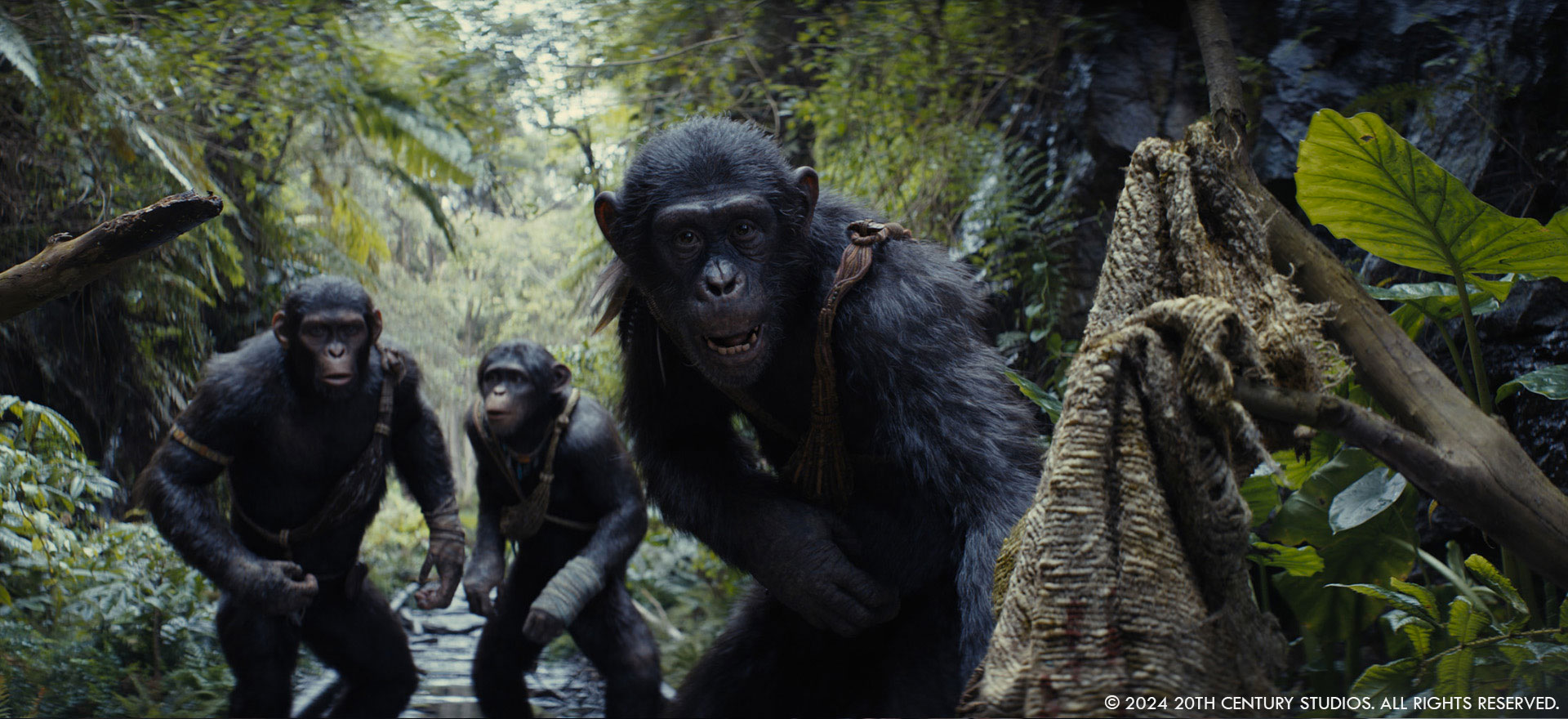
How did the team ensure consistency in the appearance and behaviour of the ape characters throughout the film?
Unter: Each actor’s performance is at the heart of every character’s behaviour. Their movement and mannerisms, expressions and emotions all flow from that performance. The actors invented a backstory for some of the key characters that serves to inform every choice they make. Why does Noa follow the law of the elders? What motivates Raka to preserve the history of Caesar? How does Proximus’ childhood affect his notion of what it means to be powerful? With that level of introspection, it’s really clear to the artists what is – and is not – true to each character.
Phillip: There is also the extremely complex challenge of costume continuity for all apes across the movie. This included different states of outfits, wounds, fur debris, wet, damp, and dry looks for both hair and skin – the list is endless. We created costume bibles for our main characters that defined the progression of outfits and looks for the entire film. It was stored in a database which sanctioned the assignments on a sequence, or even shot, level to ensure continuity across all the scenes. Feeding this database with new information to keep it up to date was a mammoth task and not for the faint hearted.
Can you explain the collaborative process between the visual effects team and other departments?
Phillip: One of many pleasant collaborative processes was with Weta Workshop’s costume department. They designed and produced a vast array of clothing items, jewellery, and accessories the apes could wear and interact with. It was fantastic to have the actual samples in your hands to study the texture, detail and craftmanship, which really shows in the final wardrobe items our apes wearing in the movie.
The eagles in the film are not only visually stunning but also play a significant role in conveying emotion and narrative. What techniques were employed to imbue them with personality and expression?
Phillip: Because our main character Noa and his family is part of the Eagle Clan, it was important to understand the story and relationship behind these apes and their eagles. From a young age they raise and bond with their eagles for life in symbiotic fashion. That however doesn’t mean any eagle gets along well with any given ape, as the relationship between Eagle Sun and Noa portraits nicely. When it came to performance we embraced the natural behaviour of eagles. Wes Ball and the main actors had the great opportunity to receive an eagle handling lesson in Australia, getting close and personal with a Wedge Tail eagle. Our VFX Supervisor Erik Winquist shot that whole encounter on camera at high frame rate. It was beautiful reference to study and a lot of what we learned there flowed directly into the eagle behaviour you see in the movie.
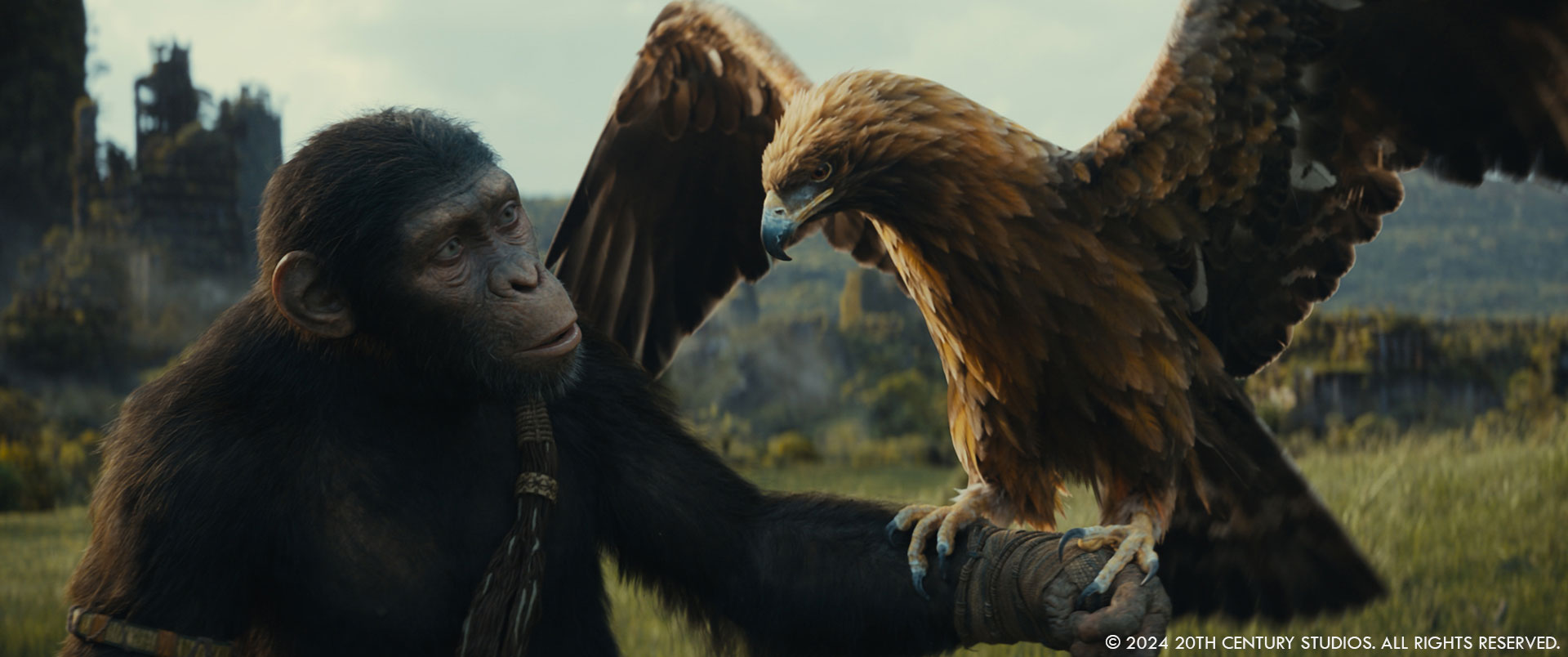
Can you walk us through the process of creating visually stunning environments, especially those featuring lush vegetation or coastal settings?
Phillip: Organically grown environments are a tough nut to crack. There’s nowhere to hide, every detail has to be accounted for, simply because audiences know very well what these natural sceneries look like in real life. We were blessed to have access to a lot of approved concept art for our environments that helped a great deal to get a feel for the look Wes was after. We backed this with a ton of reference photography of overgrown forests, ruins, derelict shipyards, etc. and build what we call an art reference pack. It contained all the approved reference photography for each scene that artists could refer to as they modelled plants, dressed foliage, painted textures, shaded old concrete ruins and rusty ships.
When it comes to plant growth there are a lot of rules, such as topology, sun exposure, wind, temperature, and erosion to name only a few. A lot of these growth rules can be wrapped into procedural dressing tools that have parameters defining the types of plants that can be rooted in certain areas – or not. These tools allow for a broad, believable first dressing pass of a scene. From there we move onto the shot specific dressing, again examining some of the dressing placement more closely, adding or removing foliage and working on the framing for the final image. Because we often had to integrate our environments into existing plate photography, the onset survey capture files and pictures taken from the shooting locations often guided and inspired our artistic choices.
Unter: The ship graveyard on the beach was a collaboration across disciplines. Kingdom takes place further into the future than the Industrial Revolution is in our past, so the art department had to imagine what present-day rusted ship hulls would look like roughly 300 years from now. Matte painting extended the dunes to include the outer encampment backed up against DEM data to establish realistic terrain, added wind to grass and tents, and arranged and detailed ship models in various states of decay. Models, lookdev, and layout teamed up to extend existing rock features in the plates into concrete and steel ruins, while creating the intricately detailed ship of Proximus’, a vessel larger than any ever made, complete with internal superstructure so that light and animation stayed true when glimpsed through the rotten hull.
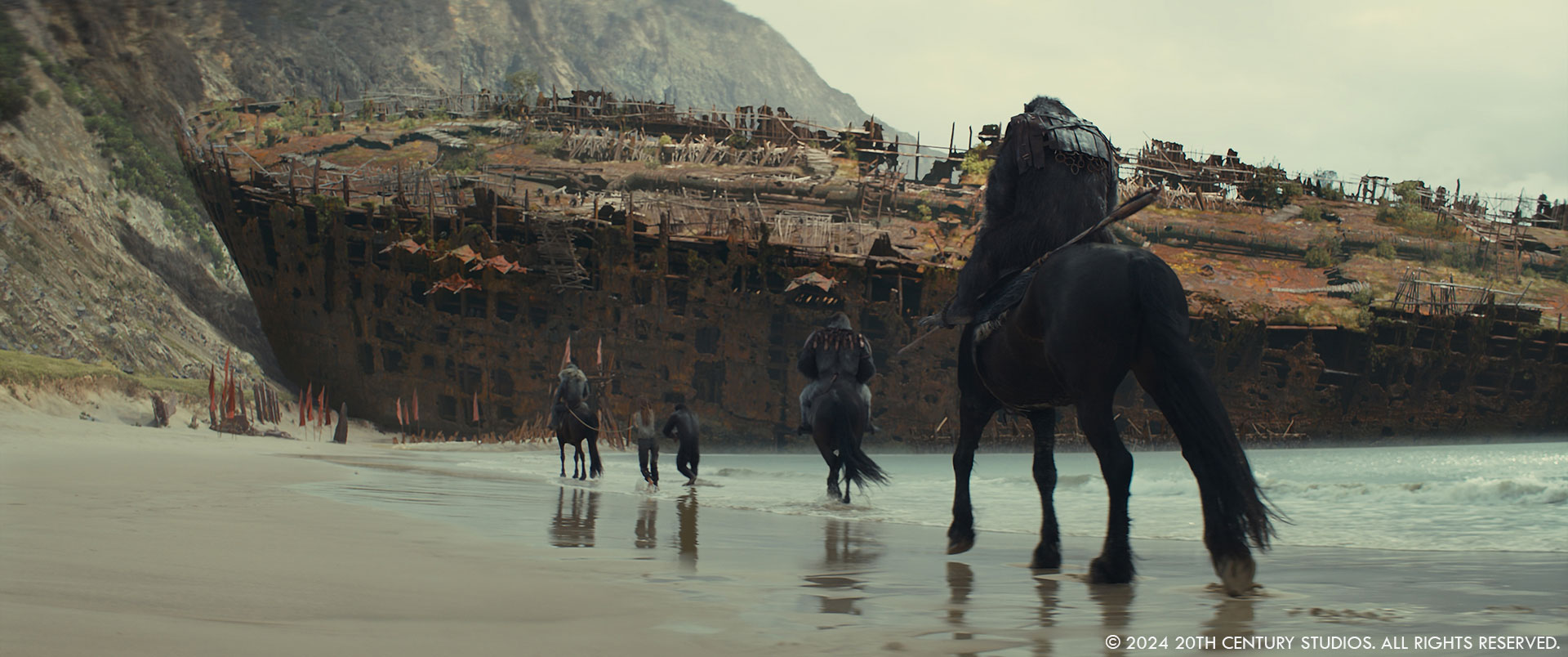
How do visual effects artists tackle the challenge of seamlessly integrating CGI environments, such as dense forests or expansive ocean vistas, with live-action footage?
Phillip: Firstly, it was important to ensure that what we generated spoke the same visual language as the scenery and flora in the various locations in Australia. We modelled, textured and shaded a large variety of native Australian plants such as gum trees and bushes, shrubs and grasses. For the actual integration with live action footage, a lot of roto and paint work was required to define natural lines where these CG extensions could be transitioned into. And it was important for Compositors to emulate the characteristics of the lenses used in the film and apply the exact look that the plate photography had to our CG. In order to do that, we profiled each lens on this project to understand what the optical characteristics are, from chromatic aberration and lens vignetting to defocus bokeh shapes and point spread functions – anamorphic lenses are a lot of fun!
Unter: As another example, we had our work cut out for us in a scene where Mae seeks refuge in the tall grass. We had to create enough plant variations to match the look of the field on location, but not so many that we’d lose the benefits of instancing. We used some predefined ambient motion, especially in the trees surrounding the field, but a lot of shots required bespoke FX simulations to match the complex behaviour of the wind across the field as a whole. And of course the interaction of the grass in contact with the apes had to be simulated per shot. Then depending on the camera angle and the position of CG apes and horses, we chose a split line to keep as much plate grass as possible while still completely imbedding our characters into the environment. Finally, compositing would grade the renders to add regional variation.
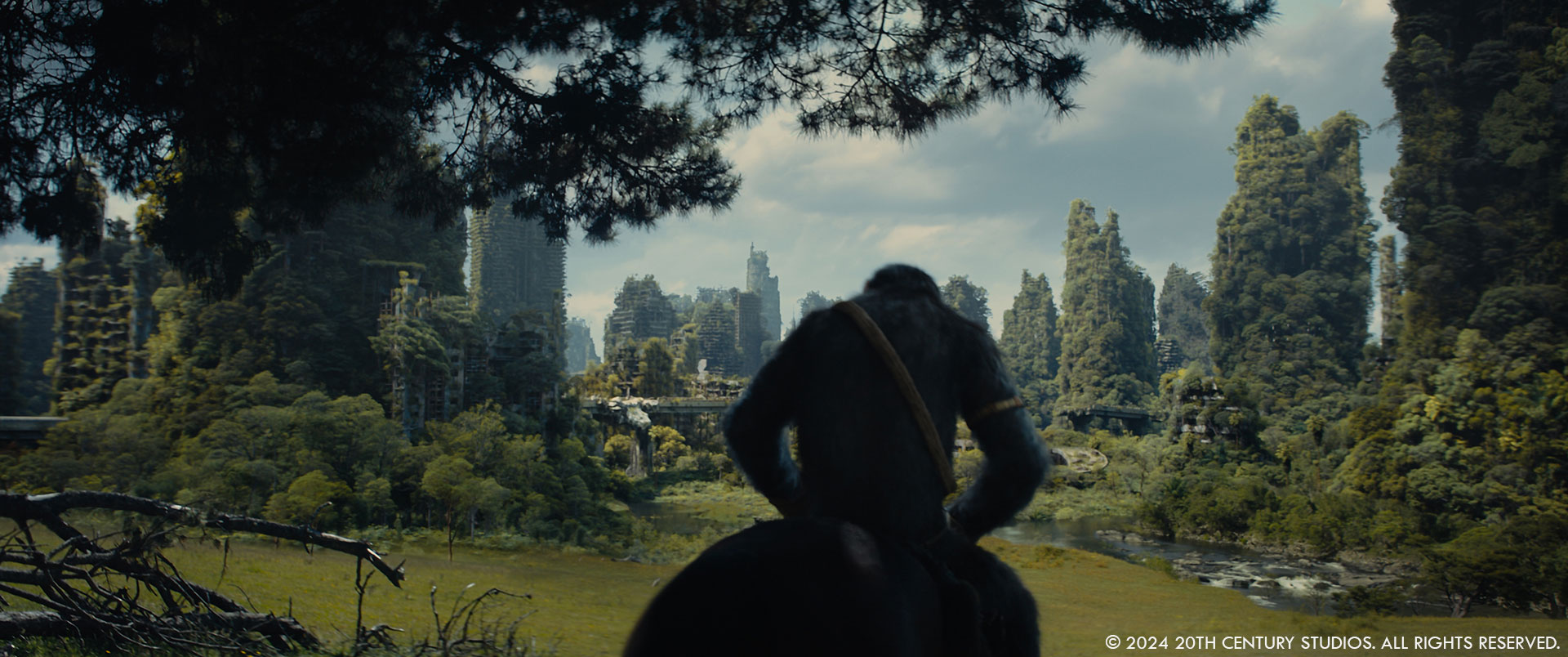
In creating environments filled with intricate details like swaying trees or crashing waves, what role do advanced simulation software and procedural generation techniques play?
Phillip: For the environments dominated by vegetation, we simulated 1000 frames of loop-able ambient wind motion based on the Beaufort scale strengths 1-8 for each plant using our inhouse plant solver. Because this produced a lot of data to wrangle, we tapped into the Houdini software package and its procedural dependency graph to manage the motion data, which was then assigned by layout artists during the refined dressing stage and tweaked where necessary. When it comes to water simulation, it’s worth noting that Kingdom contained pretty much every type and state a body of water can be. Rivers, oceans, waves, tears, waterfalls, tidal waves, you name it. Thanks to the continuous development of our water solving framework, also called ‘state machine’, we could define all the variables, scales, and properties water can have and realistically influence the outcome of its simulation. That’s not to say simulating a complex state of water in a hero FX moment is a quick thing to accomplish, but it does look extremely impressive once you see the final result.
Unter: That’s right. As an example, our heroes are drenched with ocean water when they travel along a rugged coast at night. Simulating those crashing waves required establishing the right terrain and oceanic conditions to generate additional water that not only matched but also extended the splashes in the plate. Procedural wetness on the rocks helped establish a match to the set where CG water had doused areas not touched by practical water. The cliffs they climb immediately afterwards were created using photogrammetry kit pieces generated from high resolution photography of much smaller cliffs on location. These were then arranged to correlate, as much as possible, to the hand and foot holds used by the actors on a climbing wall. The crashing waves below them feature complex interaction with the coast that was captured with drone footage and projected into place.
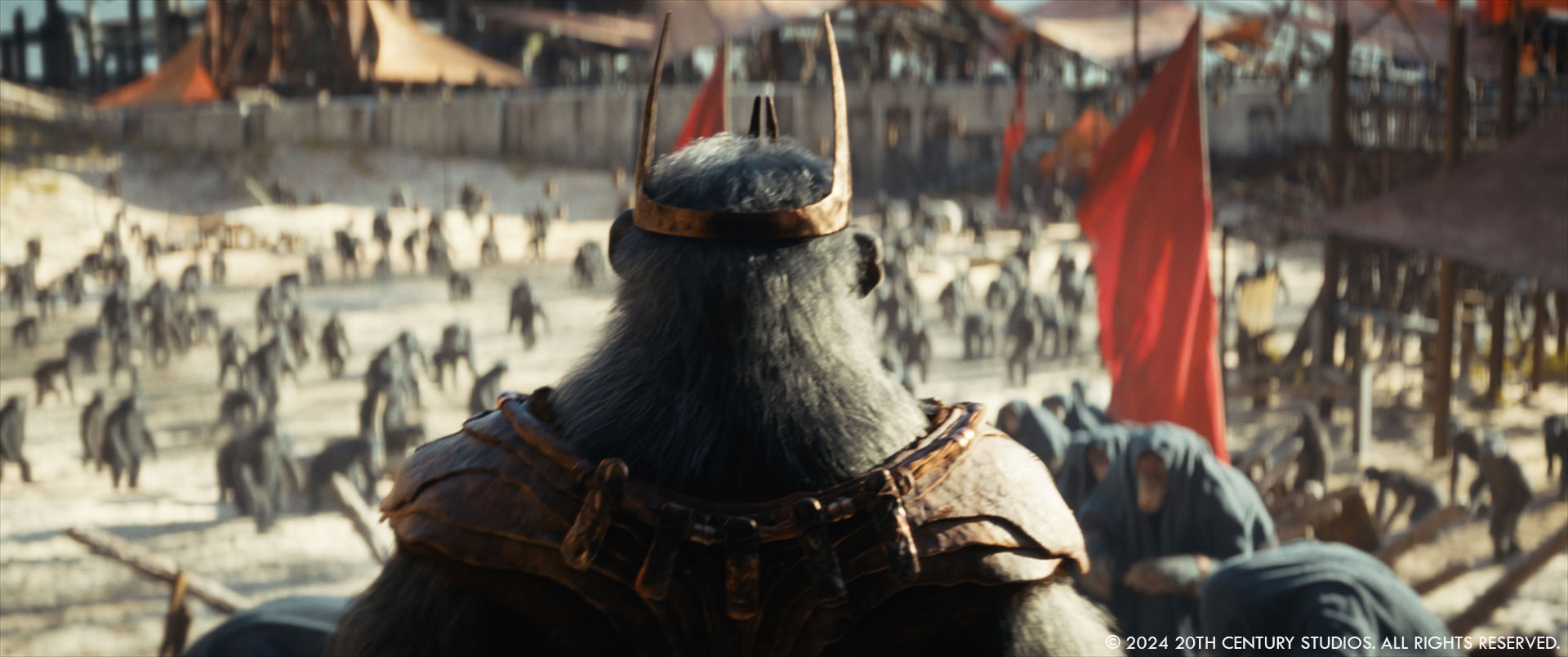
Did the visual effects team encounter any unexpected breakthroughs or discoveries during the production process?
Phillip: Nothing that wasn’t planned for or at least somewhat expected. On a project of this scale, you want to keep the ‘unexpected surprises’ to a minimum as you can’t plan with them. You sketch out your technology frame work and eliminate as many unknowns as possible beforehand to guarantee a stable process. Having said that, we did course-correct our approach to simulating fire on this show a few months in due to very promising results that our inhouse fire solver produced. It was a bit of a gamble that really paid off in the end.
Nothing seems impossible for Weta FX in the current technological advancements, what could be your next frontier in visual effects technology?
Phillip: That’s a good question, and it’s asked frequently at Weta FX. What is next? A lot of envelopes have been pushed, boundaries have been moved, and new grounds were broken. To me, the refinement and optimisation of workflows is often the key to success, simply because this frees up more time for the artists to be creative and concentrate on the things that really matter.

Were there any memorable moments or scenes from the film that you found particularly rewarding or challenging to work on from a visual effects standpoint?
Unter: There’s a shot at the end of the movie where Eagle Sun lands on Noa’s arm, that, once you’ve seen their relationship in the movie, you realise how much of a completion of their arc together this moment is. The sun is low in the sky, and there’s this great lighting that ties them to Mae in time, but not in space. The environment is a completely other location, and all CG, right down to the grass that reacts to the draft of Sun’s wings. This shot evolved a lot over time and I really enjoyed the end result.
Phillip: For me, it’s the scene where Noa arrives back at his burning village. It comprises various takes stitched together into one long shot, combining all the drama and carnage caused to Noa’s clan and family into one big, extraordinary FX firework.
Looking back on the project, what aspects of the visual effects are you most proud of?
Phillip: The sheer amount and quality of work that went into this film overall. As we worked on all the various aspects of it, it was easy to quickly lose sight of how monumental this project was as a whole. After seeing the final release in the cinema when the end credits started rolling, I was reminded once more of the incredible effort every single artist put in to make this epic piece of adventure come true.
Unter: I’m really proud that there were no second-class shots despite the sheer volume of work and epic scope of the film. The team brought so much talent and energy to this project, and that never wavered. And I always love when visual effects supports a great story, in this case that of a compassionate and clever hero. It’s great to be a part of stories like that when they come along.
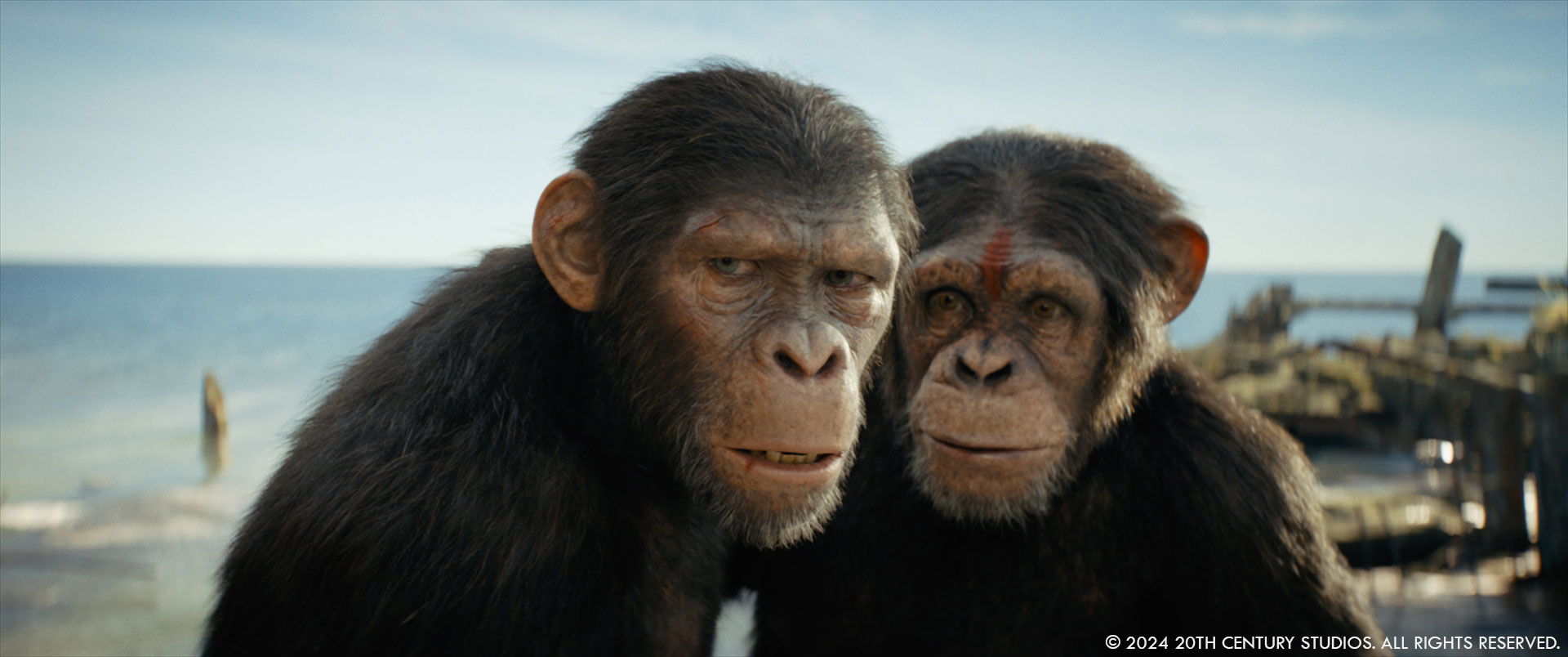
How long have you worked on this show?
Unter: A bit over a year.
Phillip: 18 months, give or take.
What’s the VFX shots count?
Unter: Just over 1500!
Phillip: 1502, to be precise.
What is your next project?
Unter: I’m actually taking a few weeks off to travel before my next show. I’ve found it an important part of the process to go out and look at the natural world with fresh eyes.
Phillip: I’ll be continuing to promote Kingdom of the Planet of the Apes, the rest is top secret. ?
A big thanks for your time.
WANT TO KNOW MORE?
Weta FX: Dedicated page about Kingdom of the Planet of the Apes on Weta FX website.
© Vincent Frei – The Art of VFX – 2024






